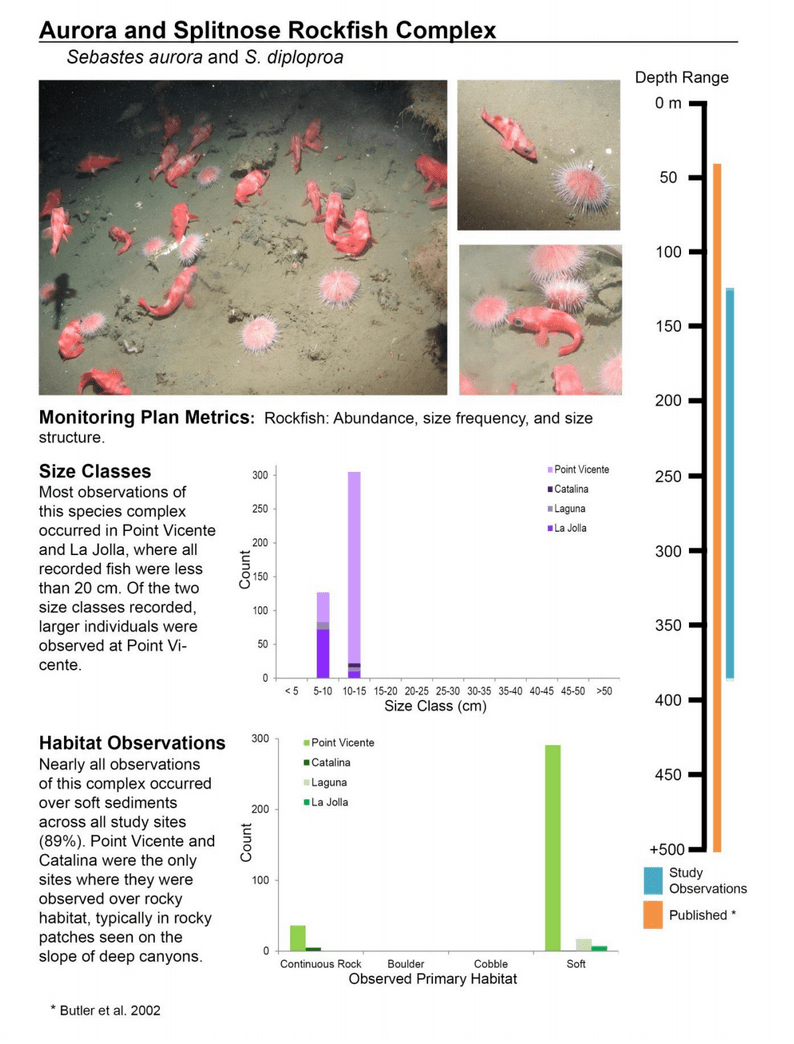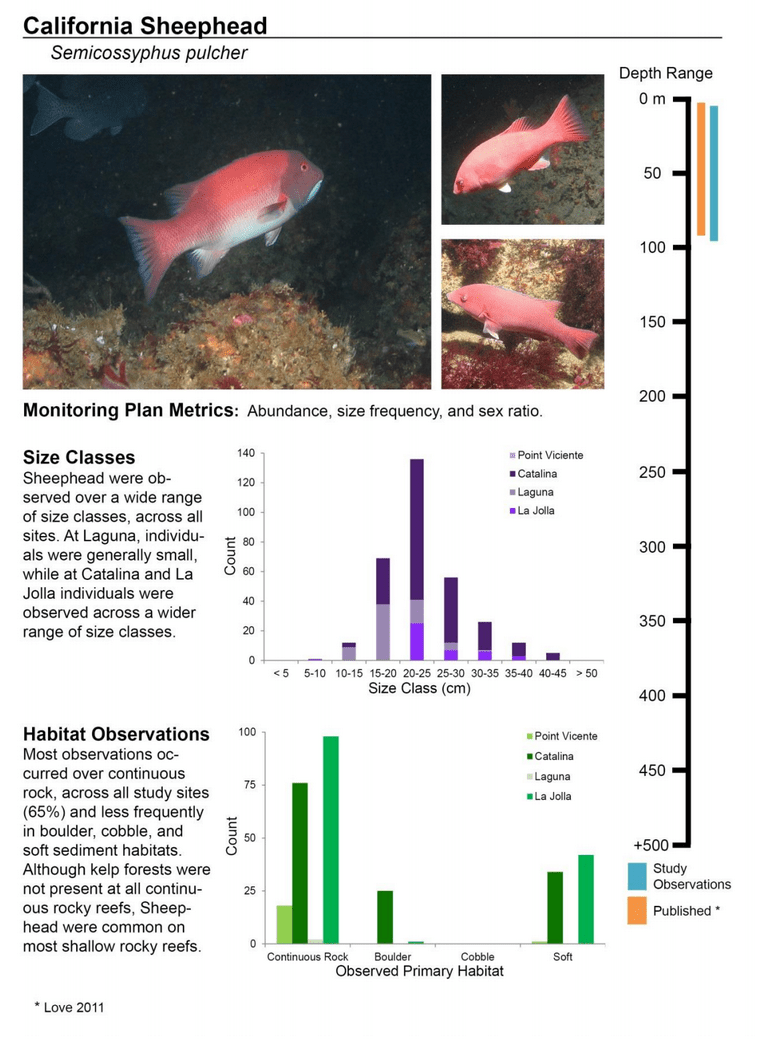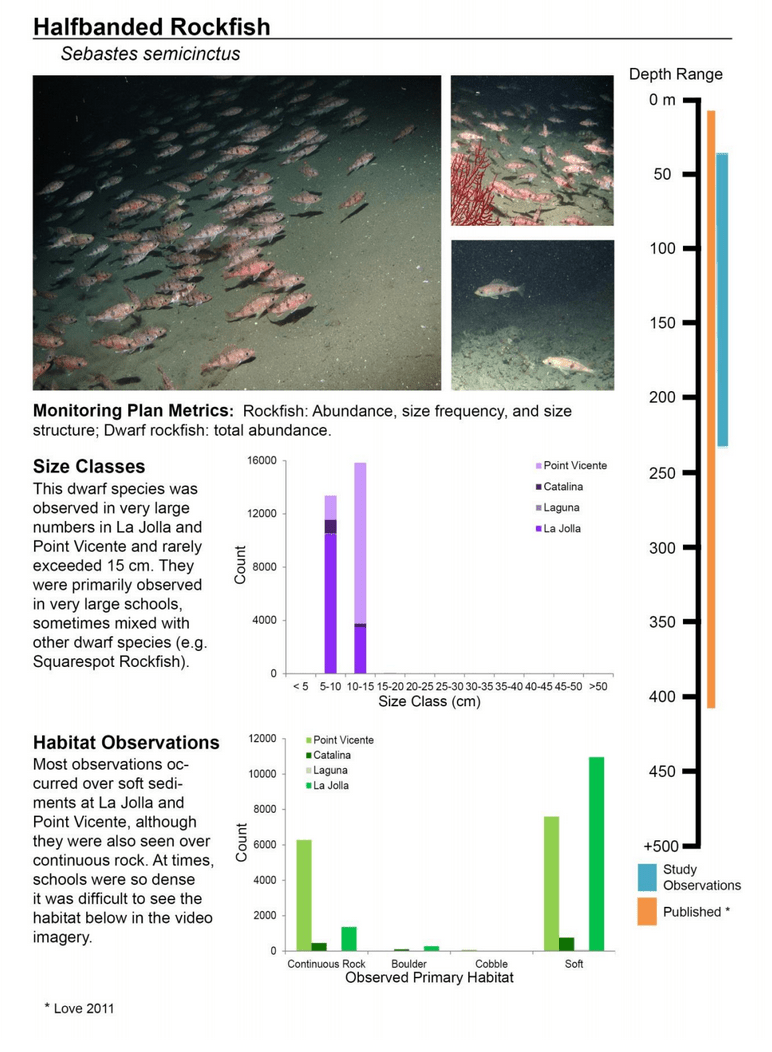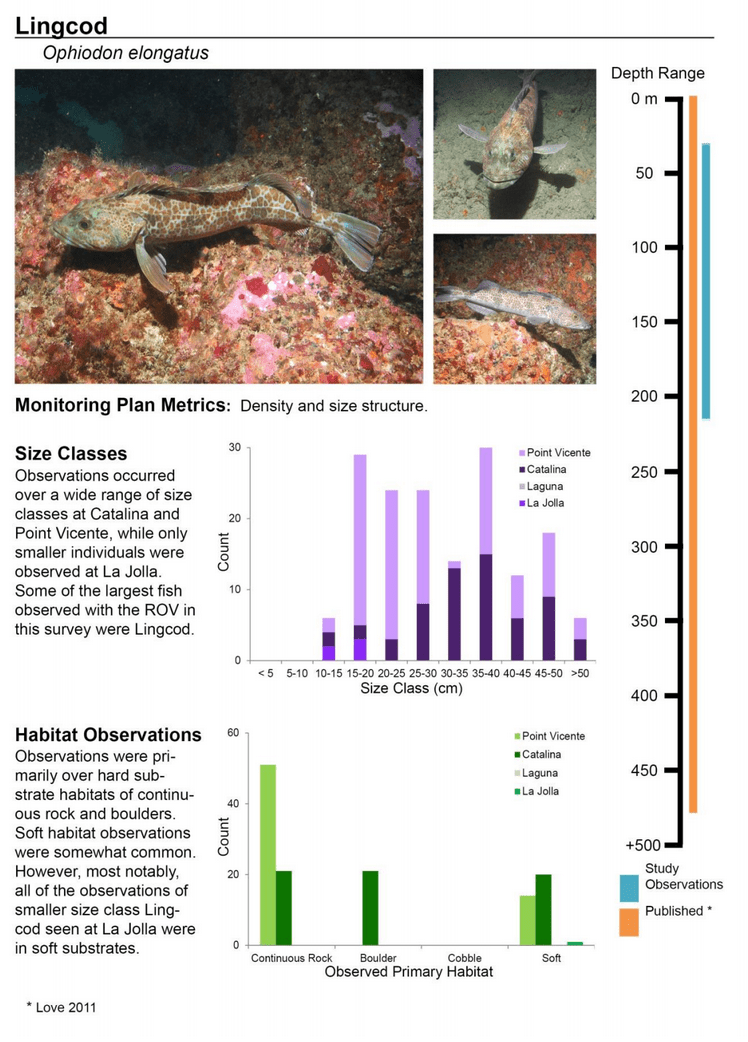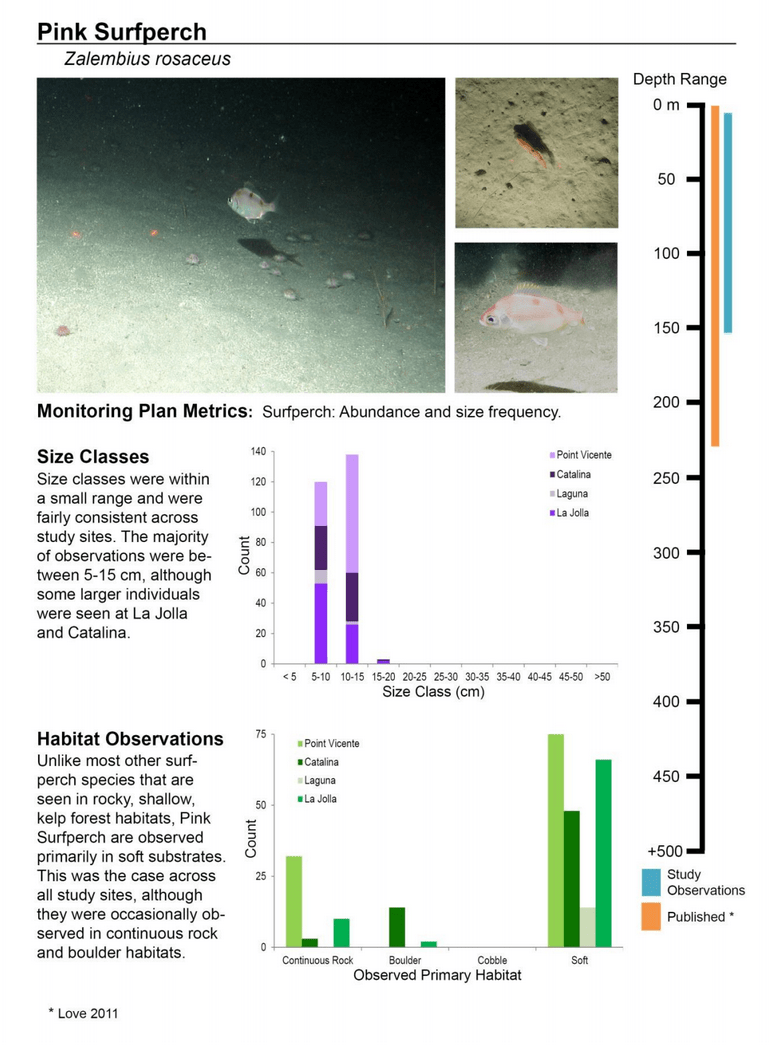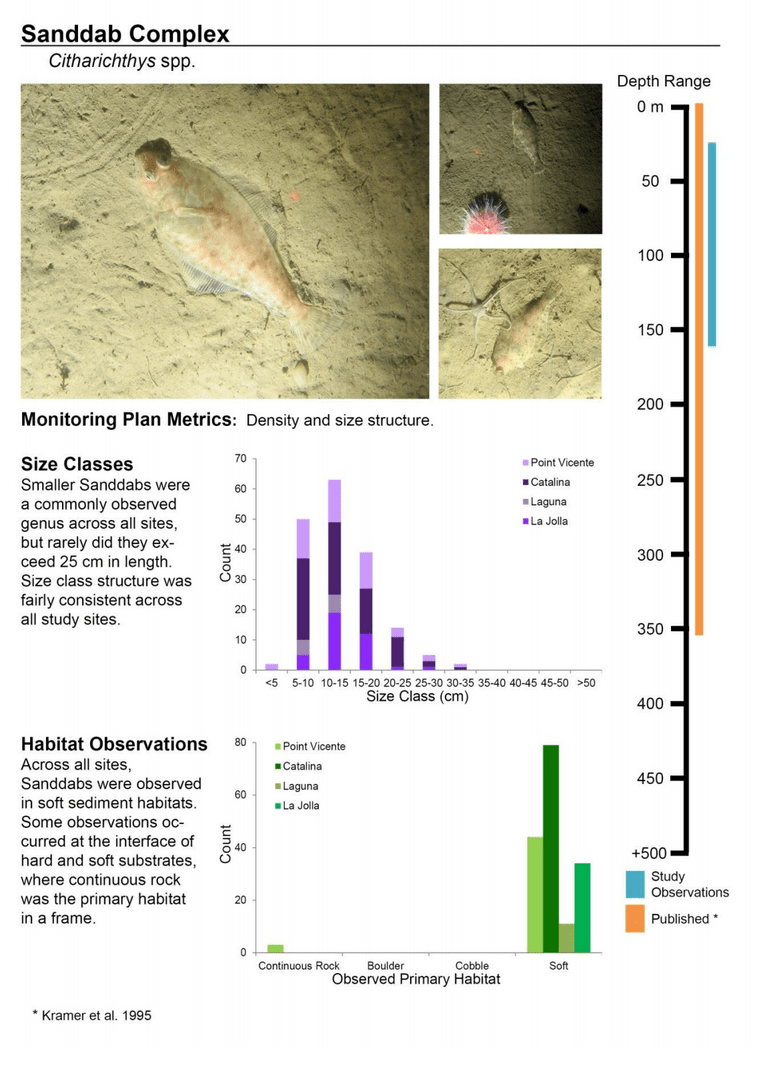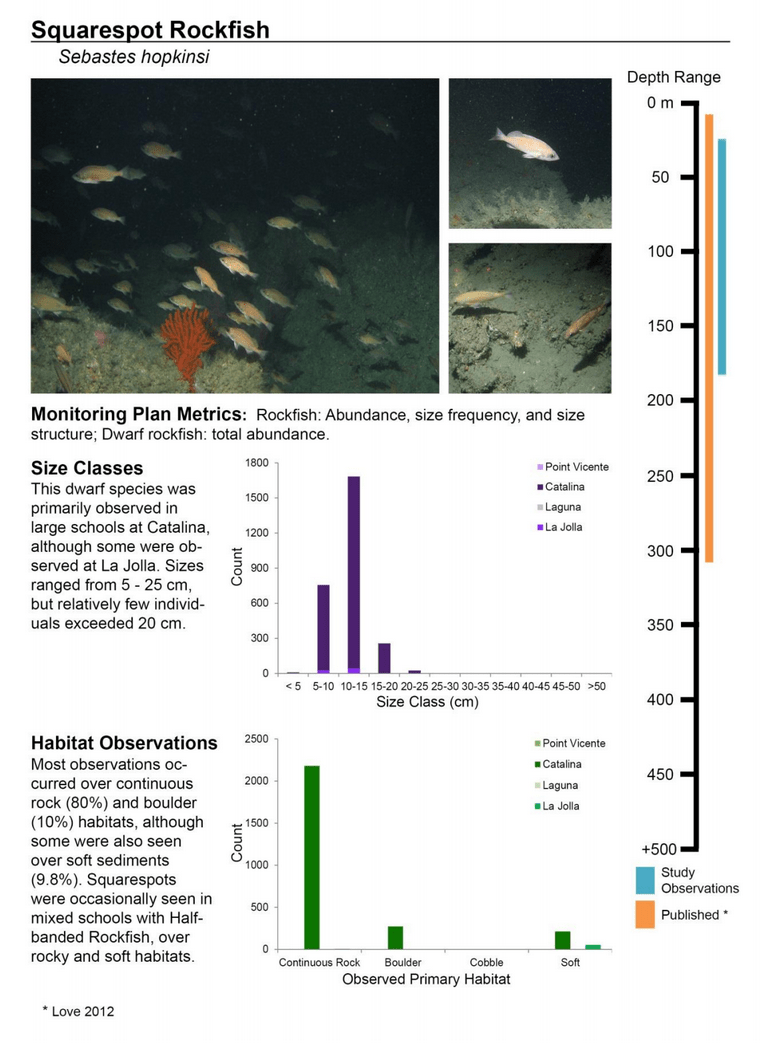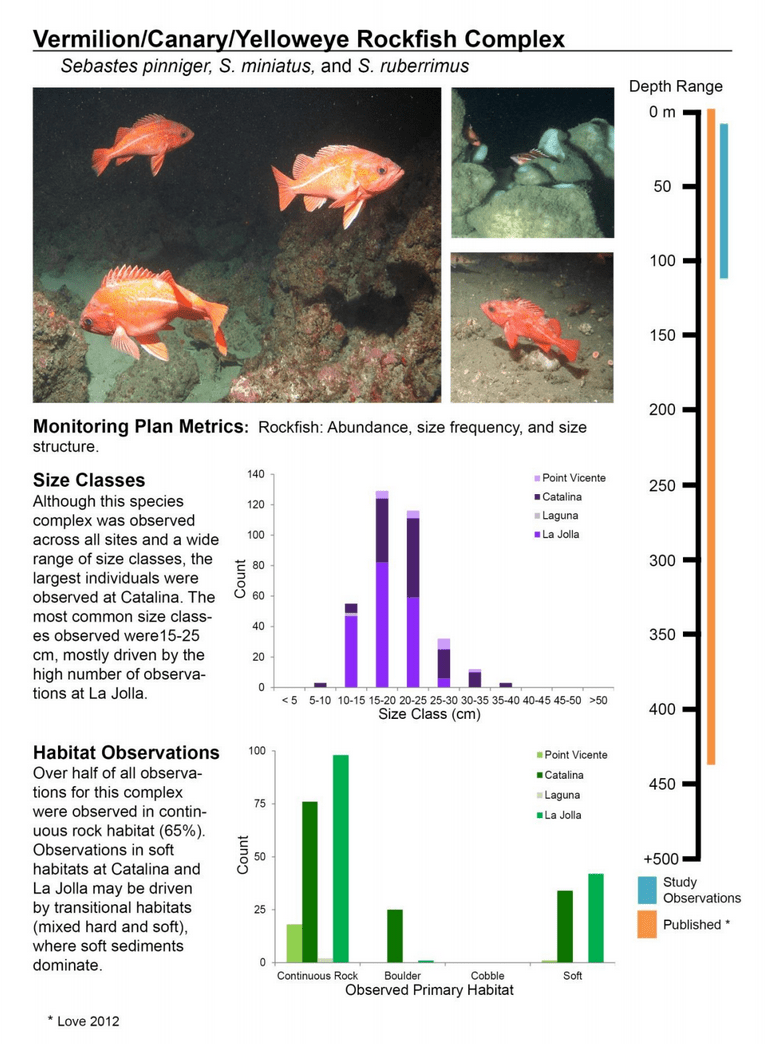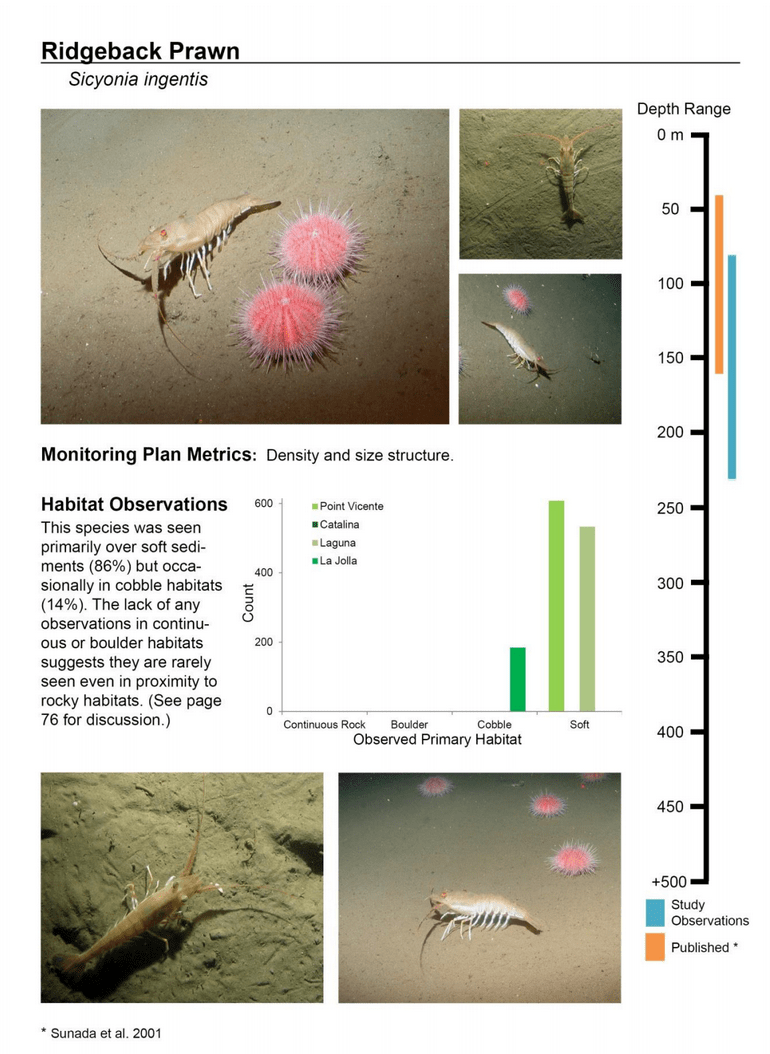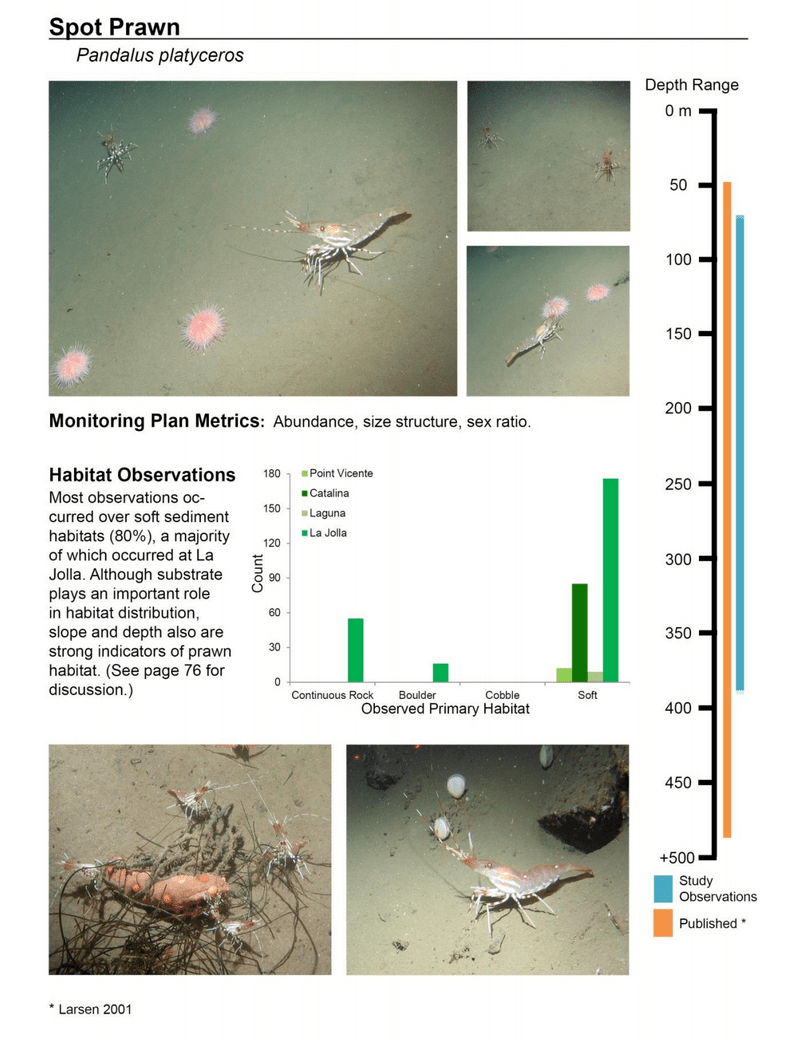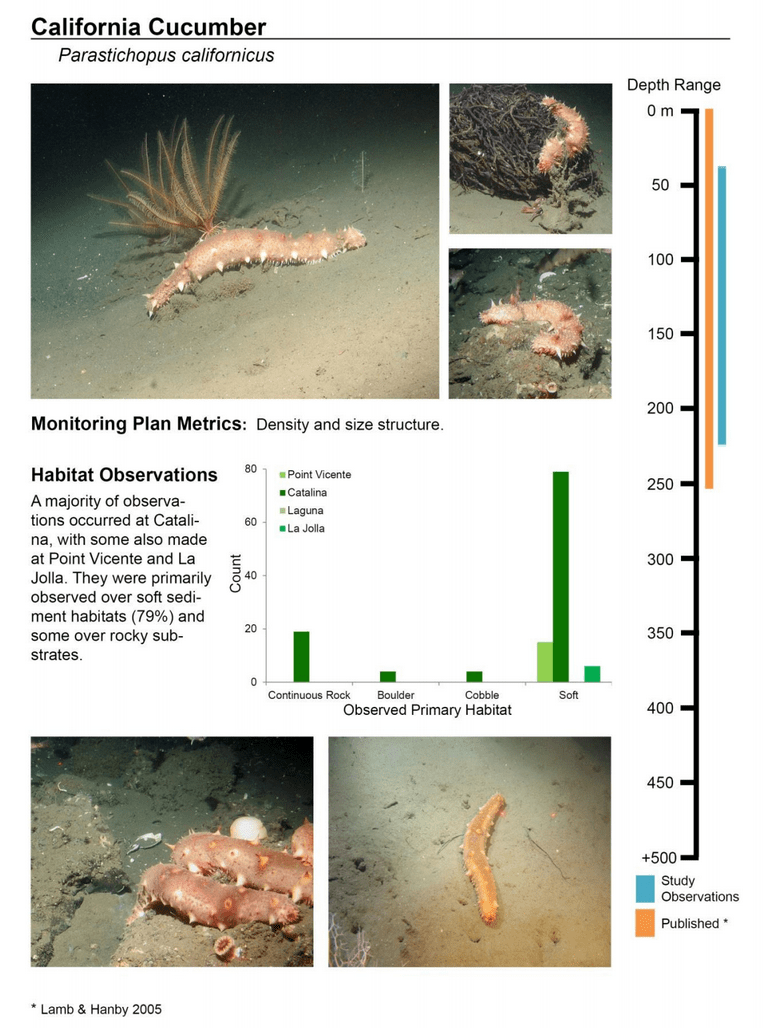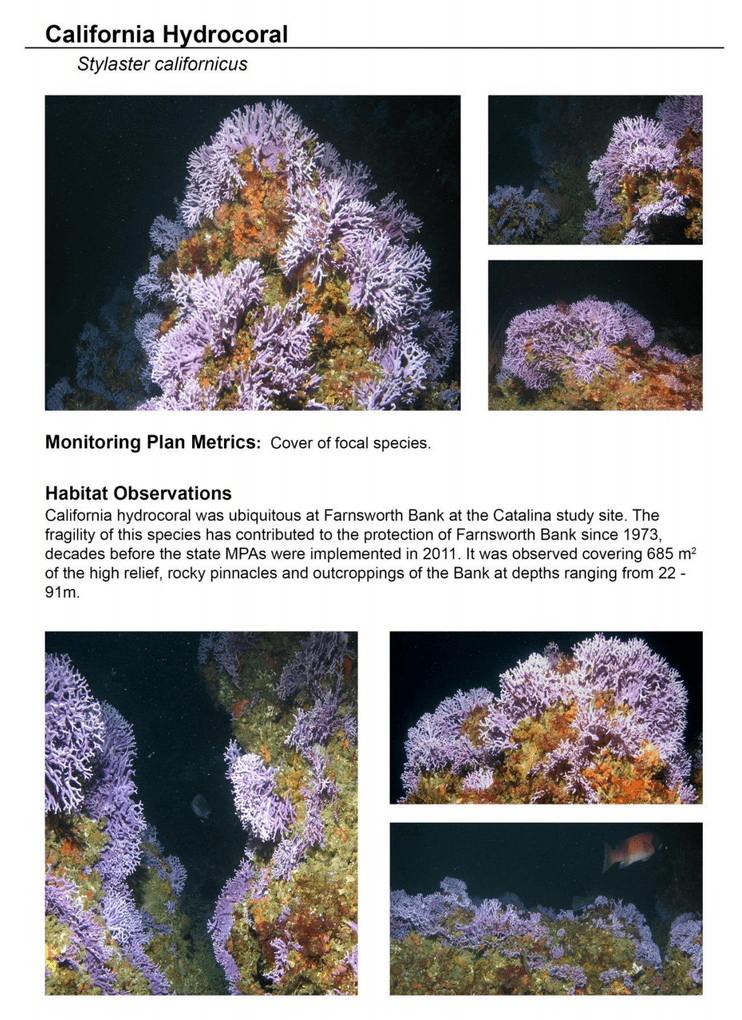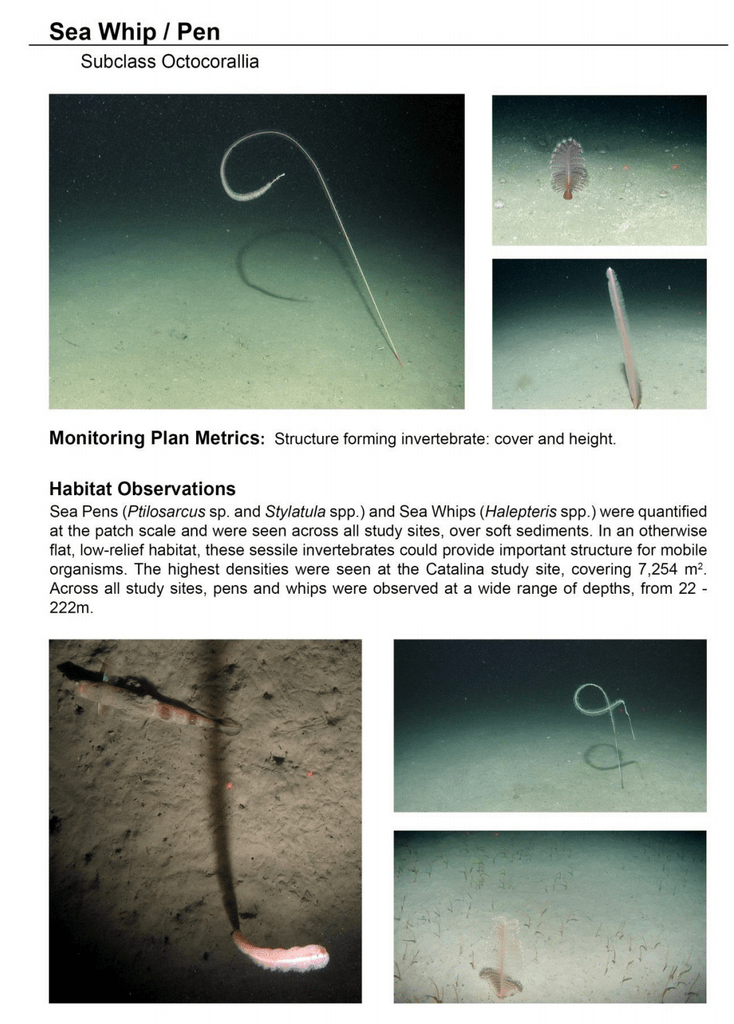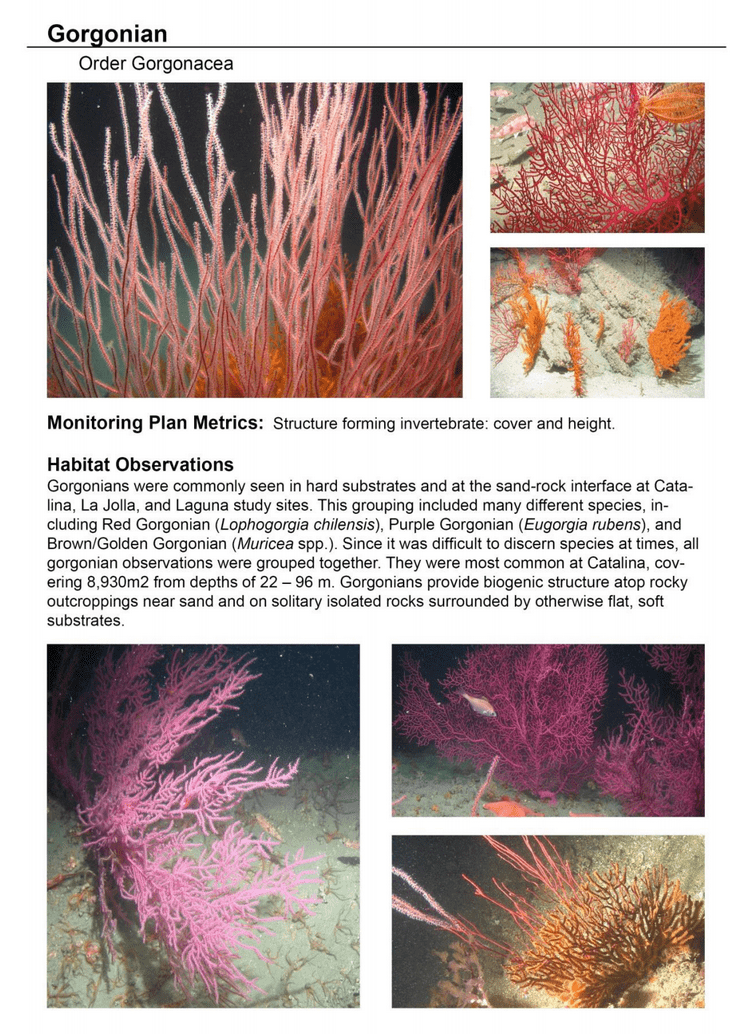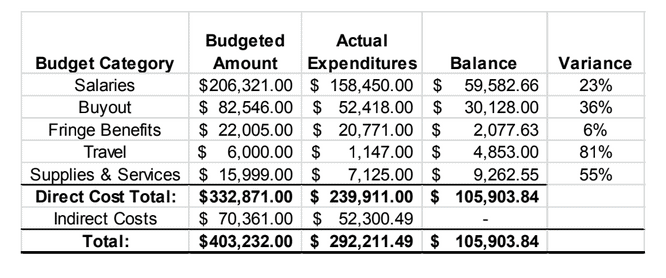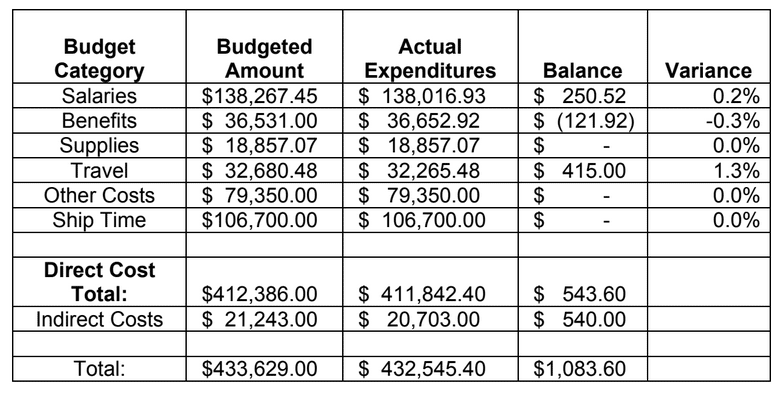April 2016 – It’s All About Your Network: Using ROVs to Assess Marine Protected Area Effectiveness
Warning: Undefined array key "file" in /home3/maregrou/public_html/wp-includes/media.php on line 1734
Warning: Undefined array key "file" in /home3/maregrou/public_html/wp-includes/media.php on line 1734
It’s All About Your Network: Using ROVs to Assess Marine Protected Area Effectiveness
Dirk Rosen
Marine Applied Research and Exploration (MARE) Richmond, California, USA
Andrew Lauermann
Marine Applied Research and Exploration (MARE) Eureka, California, USA
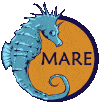
Marine Applied Research and Exploration
320 2nd Street, Suite 1C, Eureka, CA 95501 (707) 269-0800
www.maregroup.org
Abstract— California implemented the State’s first network of Marine Protected Areas (MPAs) within the nearshore waters of the northern Channel Islands in 2003. These protections serve as a tool to help ensure the long-term sustainability of marine populations and act as a living laboratory to better understand outside impacts on marine life. California’s network operates synergistically to meet the objectives that a single reserve might not. In 2006 and 2007, NOAA expanded this network of thirteen MPAs into the Channel Islands National Marine Sanctuary’s deeper waters, at the time, making them the largest integrated system of MPAs of the continental United States. Historically, marine habitats around the Channel Islands were well surveyed by scuba divers to a depth of 20 meters, but the deeper waters remained poorly studied. Together, the California Department of Fish and Wildlife, the Channel Islands National Marine Sanctuary and Marine Applied Research and Exploration (MARE) developed a long-term Remotely Operated Vehicle (ROV) program to monitor the changes these MPAs show over time. ROV configuration, survey design and protocols, as well as data post processing and analysis techniques, were developed to specifically evaluate how marine populations respond to the establishment of a network of MPAs.
To capture the ecological condition of Channel Islands MPAs at the time of implementation, the ROVs were configured to capture both fish and invertebrate data concurrently. Each ROV was equipped with both forward and downward facing video cameras, which provided a continuous view in front of and below the ROV. Ranging sonars aligned with both video cameras were used to calculate video transect width and an ultra-long baseline tracking system was used to calculate transect length and geo-reference the imagery. This allowed us to calculate species densities and relative abundance. Oceanographic parameters were collected by Sea-Bird conductivity, temperature, depth and dissolved oxygen sensors. Stereo video cameras were recently added for accurate sizing of fish and invertebrates.
ROV survey sites were initially identified with acoustic bottom maps and then confirmed with exploratory ROV dive surveys. A total of eighteen potential sites were evaluated, with ten being selected for continued monitoring (five site pairs). Inside-outside site pairs were selected for long-term
survey based upon similarity in the types and amounts of rocky substrate present, proximity to one another, and depth. The same ten sites were surveyed annually from 2005-2009, providing a solid baseline for assessing changes in marine populations. Analysis of this data showed little if any change in densities of rockfish species targeted by the commercial and recreational fisheries. In 2014 and 2015, MARE returned to re-survey the same ten historical sites. Preliminary analysis of the 2014 and 2015 data indicates that many of these rockfish species have shown a dramatic increase when compared to baseline densities inside and outside the reserves.
California has now expanded upon this network, bringing its total to 124 MPAs, comprising 16% of states waters along its 1,100 mile coastline. This makes California’s network one of the world’s largest established MPA networks—but not without controversy. Fishermen, stakeholders and marine managers vary in how they embrace network benefits to marine populations and the economic communities that depend on them. Over 65% of California’s MPA protection falls within water depths exceeding 20 meters. Understanding how these deepsea ecosystems respond to a network approach of protection is critical in evaluating not only the effectiveness of California’s MPAs, but also for understanding the spatial and temporal scale at which these networks respond. The positive change in rockfish abundance currently observed at the Northern Channel Islands provides the first opportunity to test the effect networked MPAs have on local populations, and how these areas work cooperatively to rebuild and protect critical marine populations.
Keywords—MPA; ROV; marine protected area; assess MPA effectiveness; MARE; remotely operated vehicle; spillover; network effect;
INTRODUCTION In early 2003, just prior to the implementation of the Channel Islands Marine Protected Areas (MPA) network, NOAA and the California Department of Fish and Wildlife (CDFW), invited Channel Islands National Marine Sanctuary (CINMS) researchers and other interested parties to a workshop in Santa Barbara, California. An exhaustive record of all research undertaken in the CINMS had been compiled,and was provided to all participants prior to the workshop. After encouragement to partner on research and economize and share data and ship time, the group was split into various break-out groups. One of the groups, the deep subtidal group, noted that one of the biggest data gaps in the CINMS was biological and habitat data below diver depths (18 m or 60 feet). The need for deep water data within the CINMS initiated a new partnership to fill this data gap between a state agency and a startup NGO.Working together, CDFW and Marine Applied Research and Exploration (MARE) cooperatively deployed remotely operated vehicles (ROVs) into the deep waters (>20 m) inside and outside of the soon-to-be established marine reserves. CDFW led a group to develop ROV methods and protocols, based upon accepted diver protocols and ROV protocols used in other areas. The ROV data collection and post processing methods were field tested and honed in the CINMS in 2003 and 2004. Sampling was conducted at 18 prospective sites across the four northern Channel Islands (San Miguel, Santa Rosa, Santa Cruz and Anacapa Islands), including sites which would extend existing diver survey sites into much deeper water. In 2005, ten sites were permanently selected for monitoring and surveyed annually from 2005-2009, creating the baseline for monitoring change during future ROV surveys. In 2014 and 2015, five years after the initial baseline period, we returned again to complete two more annual surveys of each of the ten sites. Preliminary results for all seven years of surveys are presented here. Detailed analysis of this recently post-processed data is ongoing, but initial results indicate a positive change in species densities over time.
EQUIPMENT
-
- The ROV benthic fish and macro invertebrate surveys began with the CDFW observation class ROV Bob, a Phantom HD2+2 built by Deep Ocean Engineering and modified by CDFW. In 2008 the more capable ROV Beagle, also built by Deep Ocean Engineering, and modified by MARE based upon lessons learned, was brought online, and began performing Channel Islands MPA surveys in 2009. Both ROVs have in excess of 91 kg (200 lbs) of forward bollard pull thrust, enabling maneuverability in heavy currents at depth while pulling their umbilicals through the water.
ROV Bob
ROV Bob was equipped with three color standard definition cameras and rated to 1,000 feet (300m) deep. Lighting was provided by 3 x 150 Watt Tungsten Halogen lights. The primary data collection cameras were aligned forward and downward facing, overlapping just slightly in field of view. The remaining camera was pointed aft, behind the ROV. All video recordings were linked using UTC timecode recorded as a video overlay and recorded on an audio track for easy extraction during post-processing.
ROV Bob was also equipped with two sets of parallel lasers, three sonars, and a location tracking system. The parallel
lasers were set with a 10 cm spread and oriented to be visible in the field of view of the primary forward and downward facing cameras. These lasers provided a scalable reference of size when reviewing the video. The two ranging sonars, also aligned with the forward and downward facing cameras, helped us maintain a constant height off the bottom and were used to calculate the area covered [1]. In areas with low visibility, an Imagenex sector scan sonar was used to navigate hazardous terrain. Sonar data were recorded at one second intervals along with UTC timecode. A Trackpoint II ultrashort baseline tracking system was used to obtain locational subsea position of the ROV with UTC timecode which was recorded every 2 seconds.
ROV Beagle
ROV Beagle is equipped with seven cameras, including five standard resolution cameras, one high definition (HD) video camera, and one HD still camera, and rated to 3,280 feet (1,000m) deep. Lighting is provided by 2 x 200 Watt HMI lights and 3 x 150 Watt Tungsten Halogen lights. Beagle’s primary data collection cameras were aligned forward and downward facing, overlapping just slightly in field of view. Both the HD still and HD video cameras were aligned forward facing. Two of the remaining cameras (both aligned forward facing) were used to capture stereo imagery, enabling us to collect highly accurate size and distance measurements [2]. The remaining camera was oriented aft. All video and still images were linked using UTC timecode recorded as a video overlay or using the camera’s built-in time stamp. ROV Beagle is also equipped with two sets of parallel lasers, three sonars, a Sea-Bird CTD with a dissolved oxygen sensor, and a tracking system. The parallel lasers were set with a 10 cm spread and oriented with the forward and downward facing cameras. The two ranging sonars, also aligned with the forward and downward facing cameras, helped us maintain altitude off the bottom and were used to calculate the area surveyed [1]. In areas with low visibility, a Blueview multibeam sonar was used to navigate hazardous terrain. Sonar and CTD data were recorded at one second intervals along with UTC timecode. A Trackpoint III ultrashort baseline tracking system was
Site and Survey Line Selection
Where Multibeam or sidescan mapping bathymetry was available, eighteen potential study areas were selected as potential long-term monitoring sites based on apparent rocky habitat. Following the initial two year exploratory phase, six MPAs and four reference areas (5 pairs) were selected for long-term monitoring. Four no-take State Marine Reserves (SMRs) were paired with four fished sites of similar habitat and close proximity; one SMR was paired with a State Marine Conservation Area (SMCA) where limited take is allowed. The selected sites are: Anacapa Island SMR and SMCA, Gull Island SMR and East Point, Carrington Point SMR and Rodes
Reef, South Point SMR and Cluster Point, and Harris Point SMR and Castle Rock (Figure 1).
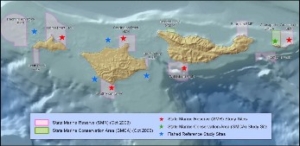
Figure 1. Ten ROV survey site locations that were sampled annually from 2005 through 2009 and in 2014 and 2015.
Within rocky habitats, both inside and outside of the MPAs, data collection was focused in defined sampling sites for use in monitoring changes in species density over time. At each location, a 500 m wide rectangular survey site was placed over the prominent rocky habitat. Each survey site was placed perpendicular to the prevailing bottom contours and spanned the target depth range of 20 to 80 meters. Using a stratified random approach, 500 m long transects, which spanned the width of the site, were selected each sampling year. The number of lines selected was determined based on the amount of rocky substrate present within each site, with the goal to collect a total of at least 3.5 linear km of rocky or mixed rock and sand habitat.
ROV Sampling Operations
At each site, the ROV was flown along the pre-planned survey lines, maintaining a constant forward speed and direction within ± 10 m of the planned survey line. It was imperative that the ship be within 35 m of the ROV position at all times to avoid pulling the ROV off transect. To stay on transect, the ROV pilot and ship captain used real-time video displays of the location of the ship and the ROV, relative to the planned survey line. A consistent transect width, as calculated from the forward camera’s field of view, was achieved using the ranging sonars to maintain a constant viewing distance from the substrate.
ROV Positional Data Post-processing
An acoustic tracking system was used to calculate the position of the ROV relative to the ship. ROV position was calculated every two seconds and recorded along with UTC timecode using navigational software which also integrated GPS position to provide real-time ROV position on the seafloor. Following the survey, the ROV position data was processed to remove outliers and data anomalies caused by acoustic noise and vessel movement, which are inherent in these systems [1]. In addition, deviations from sampling protocols such as pulls (ROV pulled by the ship), stops (ROV stops to let the ship catch up), or loss of target altitude caused by traveling over backsides of high relief structures, were identified in the data and excluded from calculations of fish species density.
Substrate and Habitat Post-processing
All video collected was reviewed and substrate types were classified independently as rock, boulder, cobble, gravel, sand, or mud using a method developed by Green et al. [3]. Each substrate type was recorded as discrete segments by entering the beginning and ending UTC timecode. Each substrate type was recorded independently, often resulting in overlapping segments of substrates. These overlapping substrate segments allowed us to identify areas of mixed substrate combinations along the survey line.
After the video review process, the substrate combinations were combined to create three independent habitat types: hard, soft, and mixed habitats. Rock and boulder were categorized as hard substrate types, while cobble, gravel, mud, and sand were all considered to be unconsolidated substrates and categorized as soft. Hard habitat was defined as any combination of the hard substrates, soft habitat as any combination of soft substrates, and mixed habitat as any combination of hard and soft substrates.
Finfish Enumeration
After completion of video review for habitat and substrate, all video was processed to estimate finfish and macro- invertebrate distribution, relative abundance, and density. During three separate viewings of the video, finfish and macro-invertebrates were classified to the lowest taxonomic level possible. Observations that could not be classified to species level were identified into a species complex, grouped based on morphology, or recorded as unidentified. During video review, both the HD video and HD still imagery were used to aid in species identifications. Each fish or invertebrate observation was entered into a database along with UTC timecode, taxonomic name/grouping, sex/developmental stage (when applicable), and count. For fish only, size was estimated using the two sets of parallel lasers as a gauge. When applicable, estimates of total length were recorded with each fish observation. All clearly visible finfish were enumerated from the video record .
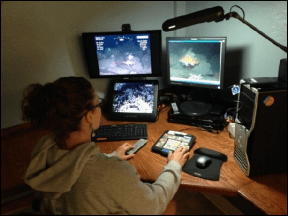
Figure 2. Typical video post-processing station.
METHODS
Data Analysis
Fish density transects were calculated using the entire forward camera’s horizontal field of view at the mid-screen. A two-step approach was used to calculate fish transects. First, the usable portions of each survey line were divided into 25 m2 segments (subunits). Each subunit’s total percent hard and/or mixed habitat was then calculated and those with percentages below 50% hard or mixed habitat were removed. Next, the remaining subunits were concatenated into 100 m2 transects (four sequential useable 25 m2 subunits) for use in density calculations. One spacer subunit was discarded between each transect to minimize bias of contiguous transects (spatial autocorrelation). Using this method of post- stratification generates hard substrate transects without the loss of rock/sand interface habitat, which may be important to some species.
For the purposes of this paper, no invertebrate results will be reported. Only five fish species are presented and include: gopher rockfish (Sebastes carnatus), copper rockfish (Sebastes caurinus), vermilion rockfish (Sebastes miniatus), lingcod (Ophiodon elongates), and California sheephead (Semicossyphus pulcher). These five species were selected based on their distribution across all sites, abundance at our survey depths, and their value to commercial and recreational fisheries; thus these species may get the most benefit from protection.
From the ten sites surveyed, only the four SMR and fished reference site pairs will be presented here. The SMR and SMCA site pair results will not be included at this time. All transect data for each site and species have been grouped into either baseline data (2005-2009) or monitoring data (2014- 2015). For each site and year, a total of 50 randomly selected transects were used to calculate densities for all five species. Descriptive statistics were calculated for each site and grouping (baseline vs monitoring).
RESULTS
From 2005 to 2009, all eight paired sites were sampled annually using an ROV. Over 300 km of video transects were collected, post-processed, and archived. Annual sampling levels were similar and averaged 62 linear km of transects per year (SD = 5.949 km; Table 1). After analysis of the video collected during the baseline period (2005-2009), a total of 4,799 fish were identified as one of the five species presented here (average of 960 total fish per year; SD = 180). After processing video for 2014 and 2015, a total of 5,192 fish were counted for both years combined for all five species combined.
Table 1. Annual survey totals (total kilometers, total hectares and total fish counts for all five species presented) at the four combined reserve sites and four combined fished sites from 2005 to 2009 and 2014 to 2015.
The average densities for all fished sites and all reserve sites for each survey year are shown in Table 2. Overall densities (total species count/total survey area for combined reserve and fished sites) showed little change throughout the baseline years (2005-2009). In 2014 and 2015, increases in average density for gopher, copper, and vermilion rockfish, as well as lingcod and California sheephead were observed. These averaged densities across all site types (reserve and fished), show that reserve sites had higher densities than the fished sites for each of these five species in 2014 and 2015.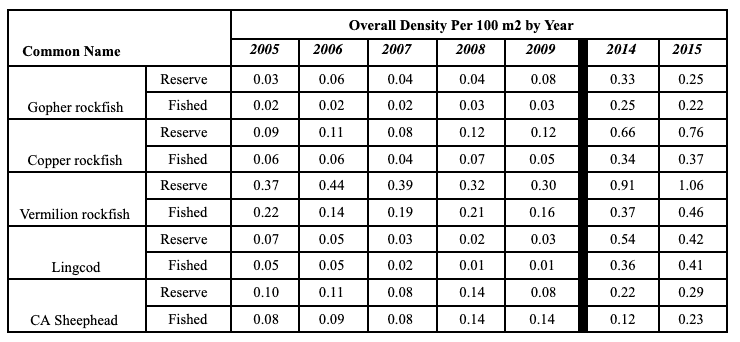

Table 2. Average densities at fished and reserve sites for each of the five species during the baseline period (2005-2009) and during the first long-term monitoring surveys of the same 8 sites (2014 & 2015).
Mean densities for each species at fished and reserve sites by survey site and survey period (baseline and long-term monitoring) are shown in Figure 3. Mean densities for the 2014 and 2015 survey years were higher than the mean densities during the baseline period for all species at both fished and reserve sites at all site pairs. Densities were mostly higher at all reserve sites, when compared to their fished reference sites, for all site pairs and species during the baseline period with the exception of CA sheephead at the Gull Island SMR and Carrington Point SMR site pairs. California sheephead densities at these two site pairs were higher in the fished sites compared to reserve sites for the baseline years.
In 2014 and 2015, densities at the reserve sites were higher than those at fished sites for every site pair except the Carrington Point SMR site pair. At Carrington Point in 2014- 2015, the three rockfish species, as well as lingcod, had lower densities at the reserve site than in the fished reference site. California sheephead were the exception and showed higher densities in 2014-2015 in the reserve site, when compared to the fished reference site.
When comparing differences in species density over time or between fished and reserve sites, copper and vermillion rockfish show the biggest changes. Copper rockfish densities at the Gull Island SMR site jumped from 0.08 fish/100 m2 (SE
Fished Reserve
2014-2015, a difference of 1.47 fish/100 m2. There was a 1.41 fish/100 m2 difference in copper rockfish densities between the fished and the reserve site as well. Vermillion rockfish saw similar differences in densities between the fished and the reserve site at the Gull Island SMR pair, with the reserve site density being 1.43 fish/100 m2 higher than the fished reference site.
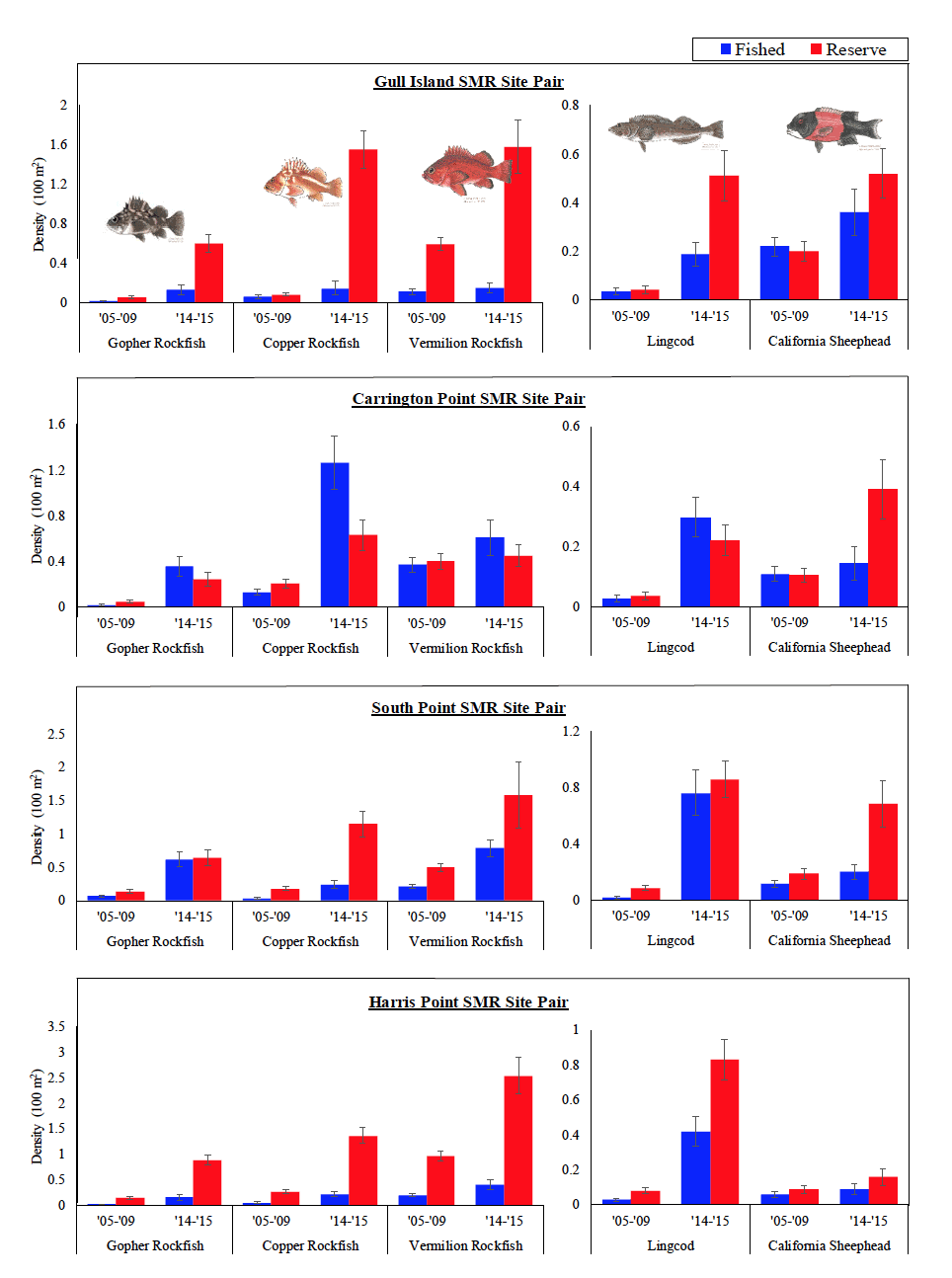
Figure 3. Comparison of mean density (with standard error) between fished and reserve site pairs for all five species during the baseline and the first long- term monitoring survey.
DISCUSSION
At the Carrington Point SMR site pair, copper rockfish had a
1.13 fish/100 m2 increase in density from the baseline to the 2014-2015 surveys. This increase put the fished site density
0.63 fish/100 m2 above the density at the reserve site for 2014- 2015 surveys.
Vermillion rockfish at the San Miguel SMR site pair had the biggest differences in densities both between sites and between years. The reserve site increased from 0.968 fish/100 m2 (SE = 0.092) in 2005-2009 to 2.54 fish/100 m2 (SE =
0.357) in 2014-2015, a difference of 1.57 fish/100 m2. Density of vermillion rockfish at the reserve site in 2014-2015 was also much higher than the fished site (0.4 fish/100 m2; SE = 0.09) at the San Miguel SMR site pair, with a difference of
2.14 fish/100 m2.
Preliminary results suggest that for all five species presented, the overall mean densities have increased notably since the baseline period (2005-2009). This is in contrast to the baseline period, where during the five years of survey, no prominent change in mean densities was observed. For four of the five species presented (gopher rockfish, copper rockfish, vermilion rockfish, and lingcod), densities have increased substantially since the baseline period (Table 2). The increase observed for these four species during the 2014 and 2015 survey seasons suggests that there was likely a successful recruitment event for the three rockfish species and lingcod. California sheephead also showed a net increase in overall density since the baseline period, but not as substantial as rockfish and lingcod.
At Gull Island SMR and Harris Point SMR, mean densities show major increases since the baseline surveys at the two reserve sites, when compared to the fished reference sites. At these two study areas, the relatively large increase in species density inside the reserve sites compared to the fished sites may indicate that the MPAs are, at least in part, driving this growth.
In contrast, at the Carrington Point SMR, all species seem to be more abundant inside the fished reference site, with the exception of California sheephead, which show a stronger increase in the reserve site. The drastic increase in species density within the fished site was an unexpected result and it is not clear what might be driving it.
As the data presented has not undergone rigorous analysis yet to account for depth, habitat and fishing pressure differences at the individual site level, results must be interpreted as preliminary. The changes in mean densities for the five species presented do, however, indicate an overall increase in density for these species at all sites. Determination of an MPA effect on rebuilding fish populations around the Channel Islands will require continued monitoring to track trends over time.
We plan to return to the Channel Islands sites in 2017, to repeat the surveys at our ten historical sites. This and future site surveys should allow us to identify any new trends to fish and invertebrate densities over time.
ACKNOWLEDGMENTS
MARE would like to thank the following agencies and organizations for supporting this project:
California Department of Fish and Wildlife, California Coastal Conservancy, California Ocean Science Trust, the Channel Islands National Marine Sanctuary, the National Oceanic and Atmospheric Administration, and The Nature Conservancy.
MARE would also like to thank the following sponsors for supporting this project:
California Ocean Protection Council, the Paul M. Angell Family Foundation, Baum Foundation, Bonnell Cove Foundation, HRH Foundation, Dirk and Charlene Kabcenell Foundation, National Fish and Wildlife Foundation and the Resources Legacy Fund.
REFERENCES
-
K. Karpov, A. Lauermann, M. Bergen, and M. Prall, “Accuracy and precision of measurements of transect length and width made with a remotely operated vehicle,” Marine Technical Science Journal 40(3), 2006, pp. 79–85.
-
M. Bower, D. Gaines, K. Wilson, J. Wullschleger, M. Dzul, M. Quist, and S. Dinsmore, “Accuracy and precision of visual estimates and photogrammetric measurements of the length of a small-bodied fish. North American Journal of Fisheries Management”, 2011, 31(1): pp. 138-143.
-
Greene, H.G., M.M. Yoklavich, R.M. Starr, V.M. O’Connell, W.W. Wakefield, D.E. Sullivan, J.E. McRea Jr., and G.M. Cailliet, “A classification scheme for deepseafloor habitats,” Oceanologica Acta 22(6), 1999 pp. 663–678.

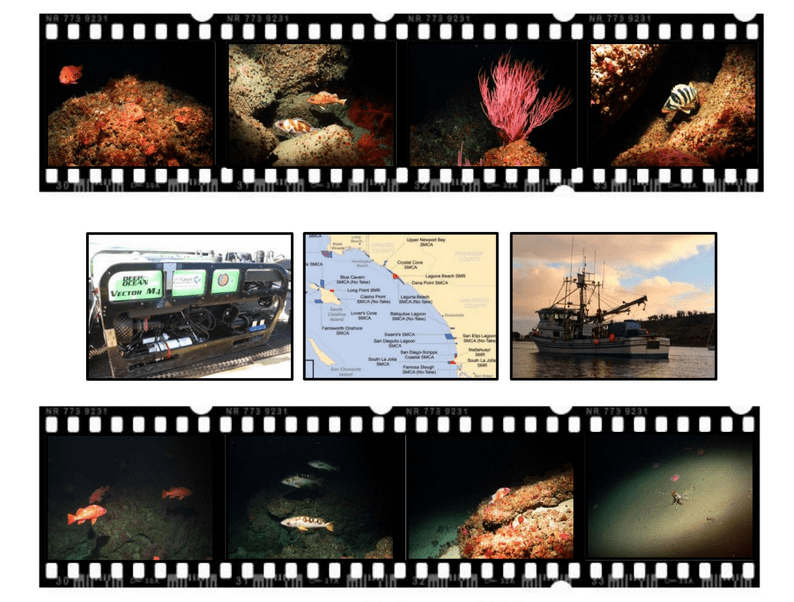
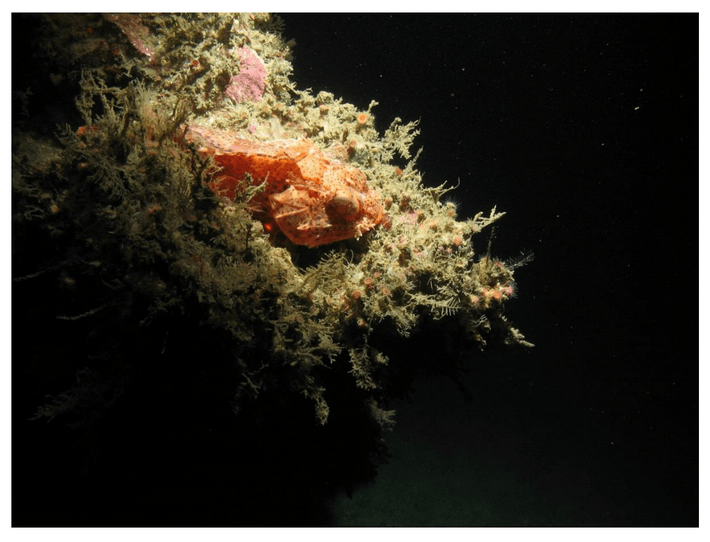
 This report summarizes the results of a multi-year study (September 2011 – January 2015) to characterize mid-depth rocky reef and soft bottom ecosystems in the California Marine Life Protection Act’s South Coast (SC) Study Region. Our specific objective was to characterize the seafloor habitats and associated biological communities within and adjacent to the State Marine Reserves (SMRs) and Conservation Areas (SMCAs) at the time of implementation.
This report summarizes the results of a multi-year study (September 2011 – January 2015) to characterize mid-depth rocky reef and soft bottom ecosystems in the California Marine Life Protection Act’s South Coast (SC) Study Region. Our specific objective was to characterize the seafloor habitats and associated biological communities within and adjacent to the State Marine Reserves (SMRs) and Conservation Areas (SMCAs) at the time of implementation.
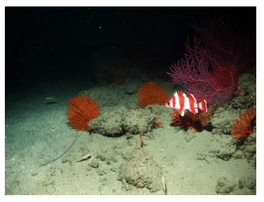 to rocky reefs, and the transitional areas in between. At the northernmost mainland site (Point Vicente), Halfbanded Rockfish were the most abundant of the 16,853 fish we observed. It is important to note that we were prevented from sampling the limited rocky reef areas along the mainland due to the significant entanglement hazards created by Giant Kelp (Macrocystis pyrifera) and lobster pots. In the south (La Jolla), which included both shelf sites as well as sites deep within the submarine canyons, Halfbanded Rockfish also dominated the 16,867 fish observed, despite very challenging sampling conditions. Indeed, to account for the great difficulties we encountered sampling the deep submarine canyons, we developed a new sampling protocol described below in the section on Analytical products derived from baseline data. Of the 15,837 fish observed at the Farnsworth Bank MPAs along the southwest coast of Catalina Island, where visibility was generally excellent, Blacksmith were the most numerous (n=3,458). We also observed thousands of invertebrates, both mobile and sessile, across the study area.
to rocky reefs, and the transitional areas in between. At the northernmost mainland site (Point Vicente), Halfbanded Rockfish were the most abundant of the 16,853 fish we observed. It is important to note that we were prevented from sampling the limited rocky reef areas along the mainland due to the significant entanglement hazards created by Giant Kelp (Macrocystis pyrifera) and lobster pots. In the south (La Jolla), which included both shelf sites as well as sites deep within the submarine canyons, Halfbanded Rockfish also dominated the 16,867 fish observed, despite very challenging sampling conditions. Indeed, to account for the great difficulties we encountered sampling the deep submarine canyons, we developed a new sampling protocol described below in the section on Analytical products derived from baseline data. Of the 15,837 fish observed at the Farnsworth Bank MPAs along the southwest coast of Catalina Island, where visibility was generally excellent, Blacksmith were the most numerous (n=3,458). We also observed thousands of invertebrates, both mobile and sessile, across the study area.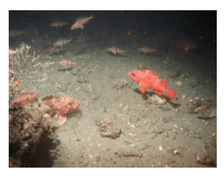 Insofar as this project was dedicated to a baseline characterization in support of future monitoring efforts, we targeted as many fishes (ranging from species to morphological groups) listed in the South Coast Monitoring Plan as could be sampled effectively with an ROV. We sampled a total of 13 (76.5%) of the fishes and fish groupings (e.g. “Rockfishes”) included in the monitoring plan, under ecosystems surveyed by the ROV (Table 1). Further, we sampled a total of 71% of invertebrate species and groups described in the monitoring plan (Table 2). Suggestions for Future Monitoring – Anticipating the challenge of sustaining a long-term monitoring effort well beyond the baseline provided here, we propose the following list of species/taxonomic groups for inclusion in a video-based monitoring program. These species, including both fishes and invertebrates, are a) observed in numbers that are appropriate for a variety of statistical analyses and b) are capable of being identified with a high level of confidence from imagery alone.
Insofar as this project was dedicated to a baseline characterization in support of future monitoring efforts, we targeted as many fishes (ranging from species to morphological groups) listed in the South Coast Monitoring Plan as could be sampled effectively with an ROV. We sampled a total of 13 (76.5%) of the fishes and fish groupings (e.g. “Rockfishes”) included in the monitoring plan, under ecosystems surveyed by the ROV (Table 1). Further, we sampled a total of 71% of invertebrate species and groups described in the monitoring plan (Table 2). Suggestions for Future Monitoring – Anticipating the challenge of sustaining a long-term monitoring effort well beyond the baseline provided here, we propose the following list of species/taxonomic groups for inclusion in a video-based monitoring program. These species, including both fishes and invertebrates, are a) observed in numbers that are appropriate for a variety of statistical analyses and b) are capable of being identified with a high level of confidence from imagery alone.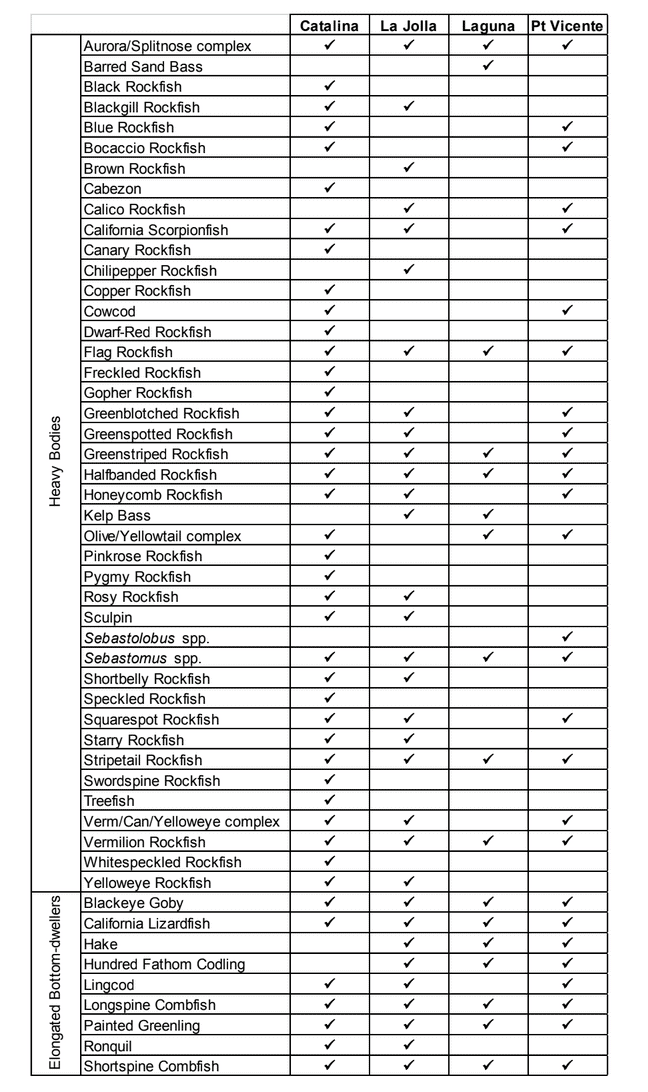
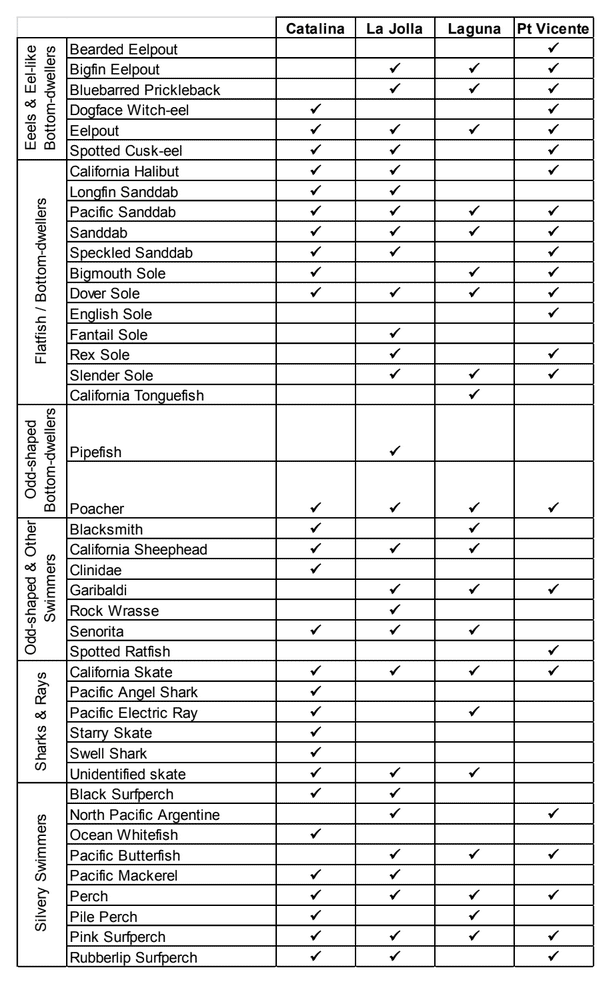
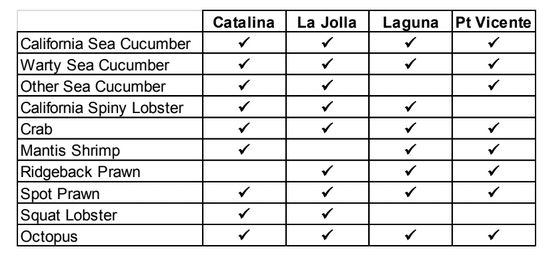
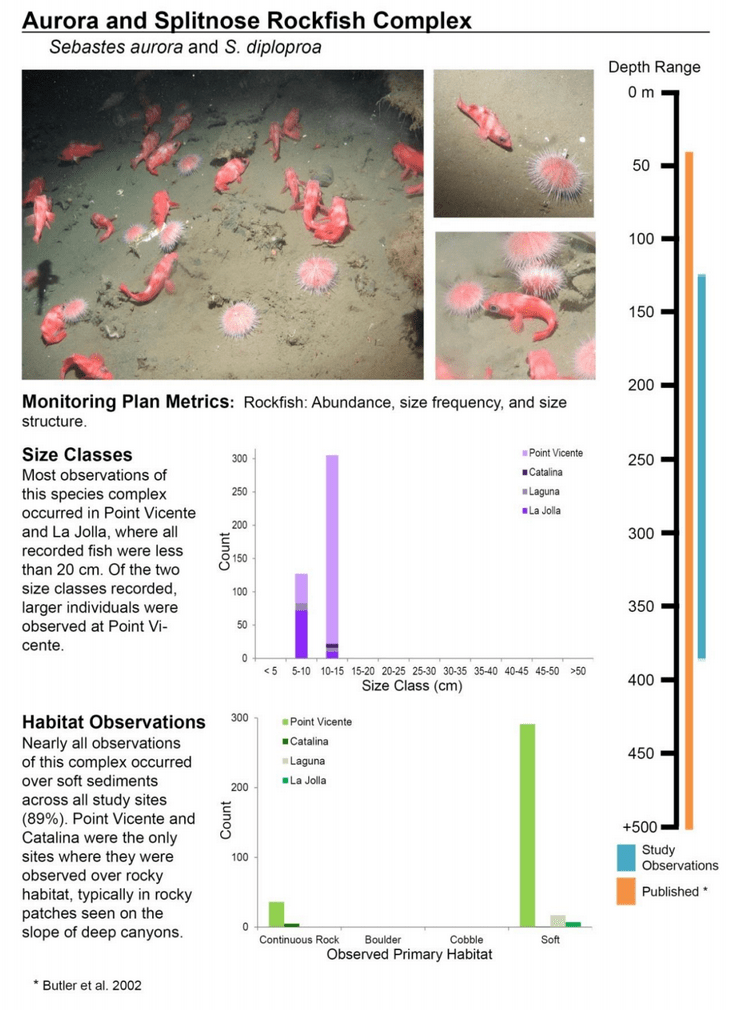
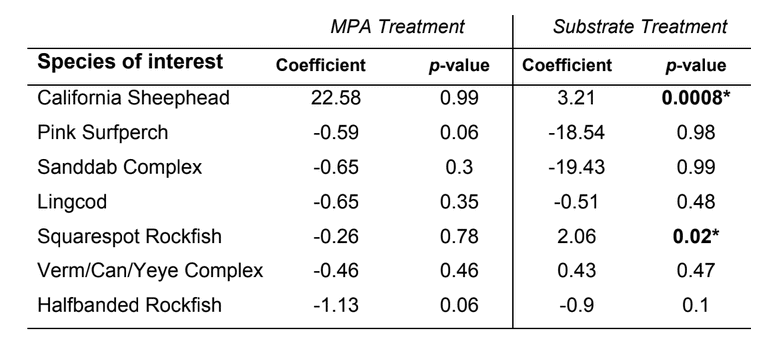
 estimated 29% (1840 km2) of state waters in southern California, yet they are sampled with far less frequency when compared to shallower waters due to the many challenges associated with sampling in deep water.
estimated 29% (1840 km2) of state waters in southern California, yet they are sampled with far less frequency when compared to shallower waters due to the many challenges associated with sampling in deep water.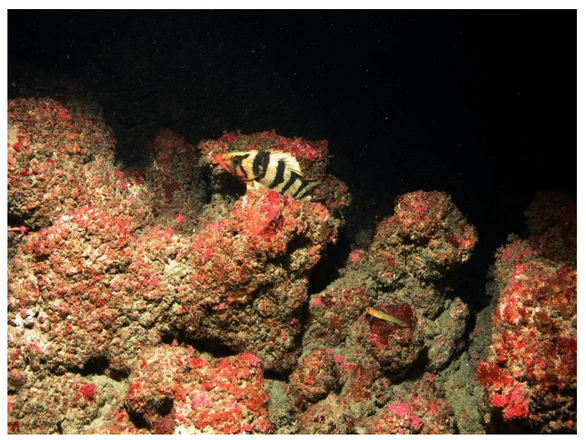
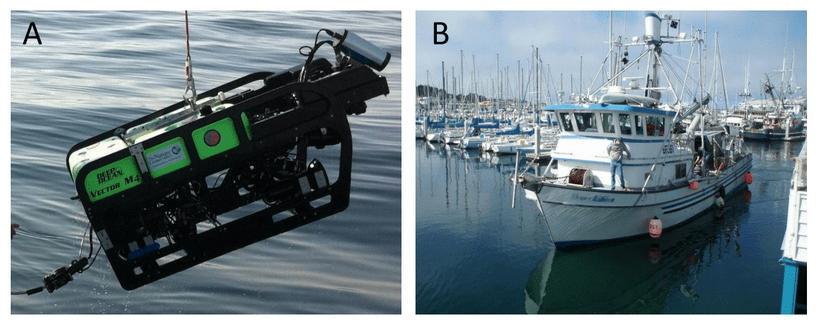
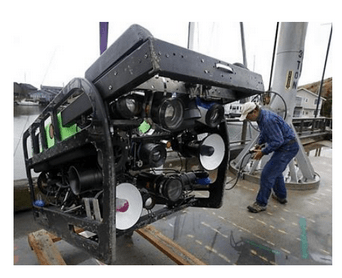 video, forward-looking high-definition video, down-looking standard-definition video, digital still (forward or down positional), and rear facing video), two quartz halogen and HMI lights, paired forward- and down-looking sizing lasers (spaced at 10 cm), and a strobe for still photos. The ROV was also equipped with an altimeter, forward-facing multibeam sonar, CTD, and dissolved oxygen meter. The position of the ROV on the seafloor was maintained by the Trackpoint III® acoustic positioning system with the resulting coordinates logged into Hypack® navigational software. The ROV was ‘flown’ over
video, forward-looking high-definition video, down-looking standard-definition video, digital still (forward or down positional), and rear facing video), two quartz halogen and HMI lights, paired forward- and down-looking sizing lasers (spaced at 10 cm), and a strobe for still photos. The ROV was also equipped with an altimeter, forward-facing multibeam sonar, CTD, and dissolved oxygen meter. The position of the ROV on the seafloor was maintained by the Trackpoint III® acoustic positioning system with the resulting coordinates logged into Hypack® navigational software. The ROV was ‘flown’ over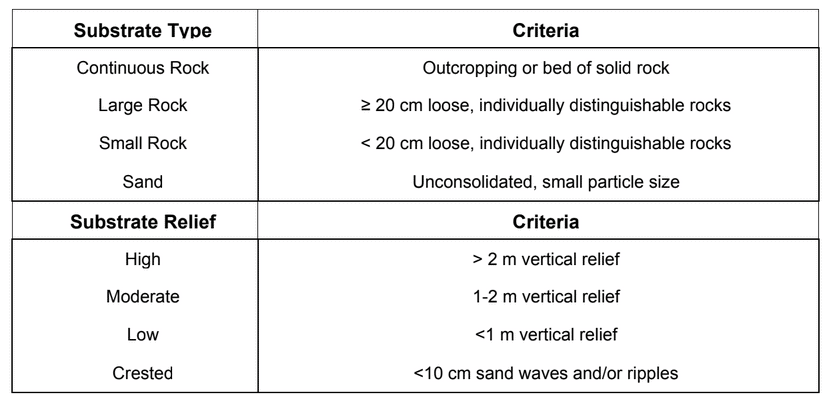
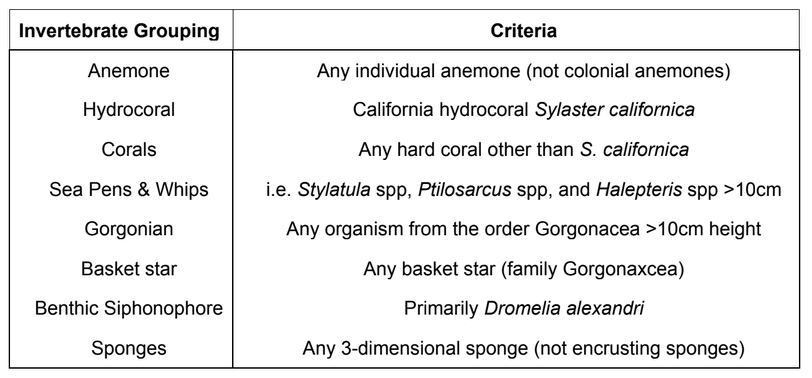
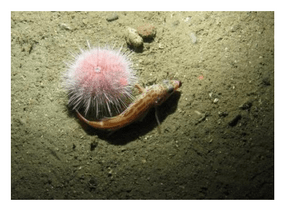 research project, we sought to let the data drive the scale of the analyses rather than constraining the analyses to our a prior understanding of a particular species’ distribution. For on-going analyses of project data (summarized in a separate section below), sub-sampling of transect data occurred post hoc for selected species or taxonomic groups based on their distribution and considering the extent to which spatial autocorrelation influenced the data (Hallenbeck et al. 2012). Consequently,
research project, we sought to let the data drive the scale of the analyses rather than constraining the analyses to our a prior understanding of a particular species’ distribution. For on-going analyses of project data (summarized in a separate section below), sub-sampling of transect data occurred post hoc for selected species or taxonomic groups based on their distribution and considering the extent to which spatial autocorrelation influenced the data (Hallenbeck et al. 2012). Consequently,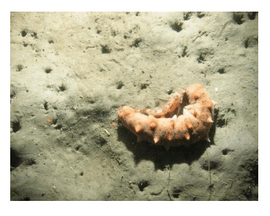 sessile invertebrate
sessile invertebrate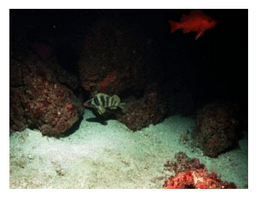 future changes could be compared. As such, our sampling with the ROV at each location 2011 and 2012 was not intended to flesh out any differences between the two sampling periods. Further, given that our sampling was conducted essentially at the moment of designation for the MPAs, we were not focused on any “MPA effects” either. However, as questions inevitably arise about differences between sampling years, and between
future changes could be compared. As such, our sampling with the ROV at each location 2011 and 2012 was not intended to flesh out any differences between the two sampling periods. Further, given that our sampling was conducted essentially at the moment of designation for the MPAs, we were not focused on any “MPA effects” either. However, as questions inevitably arise about differences between sampling years, and between




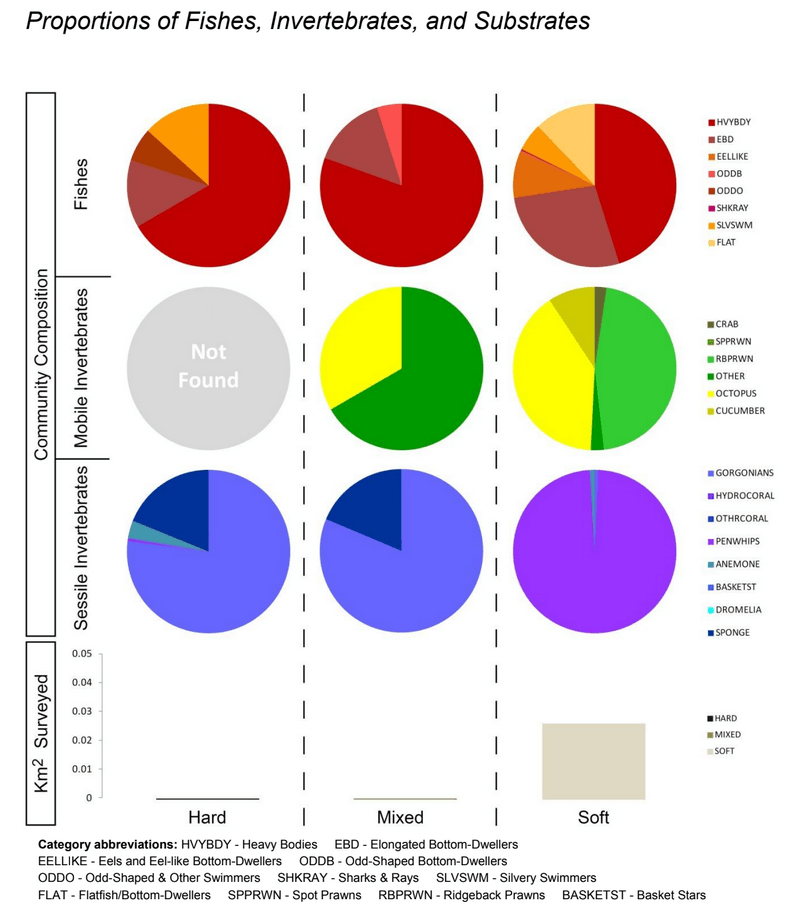

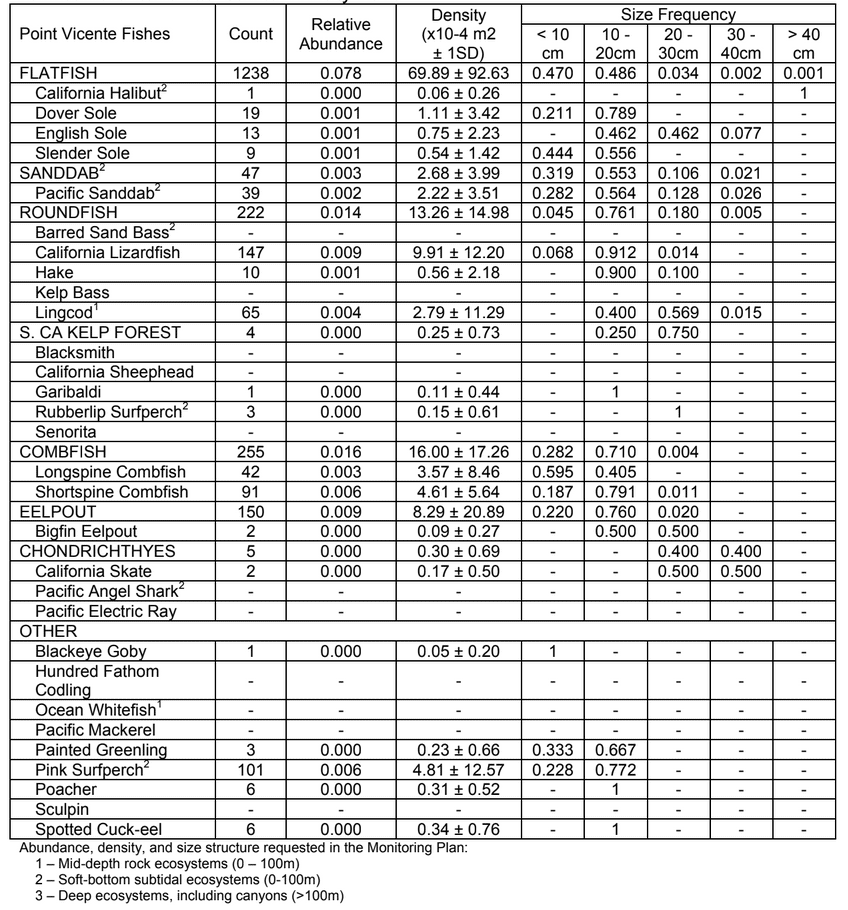
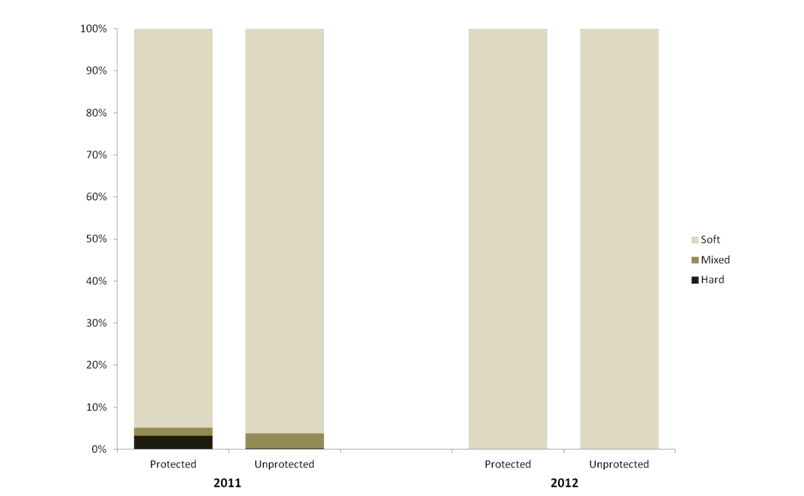
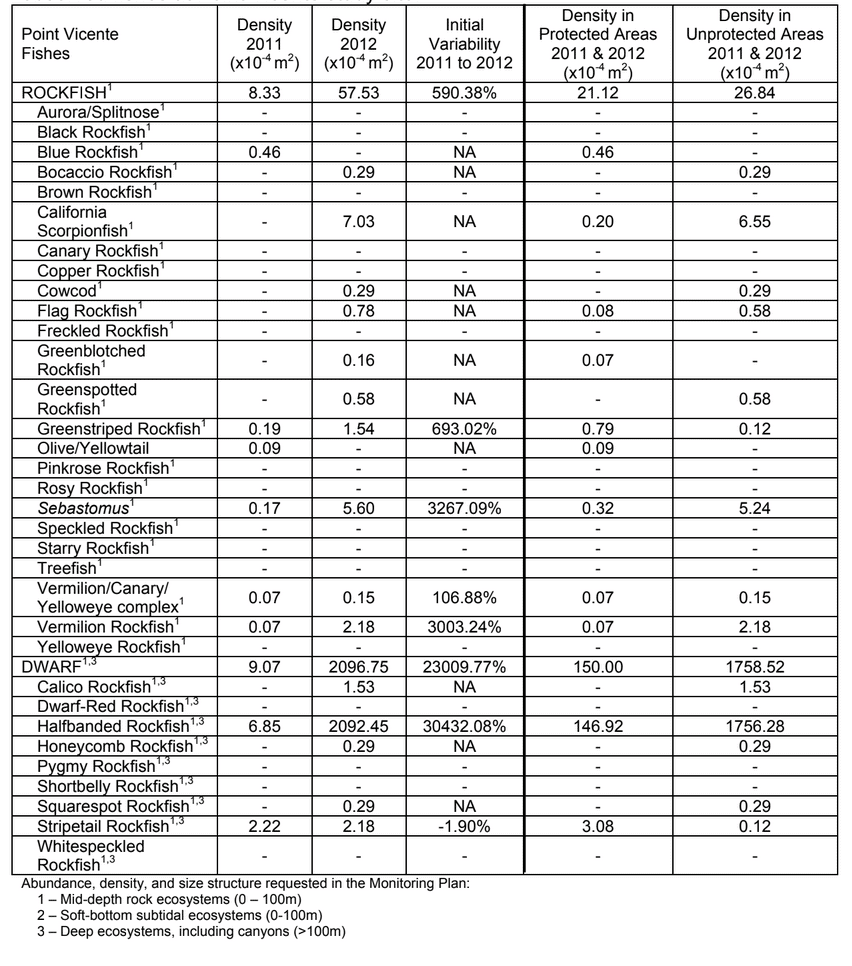
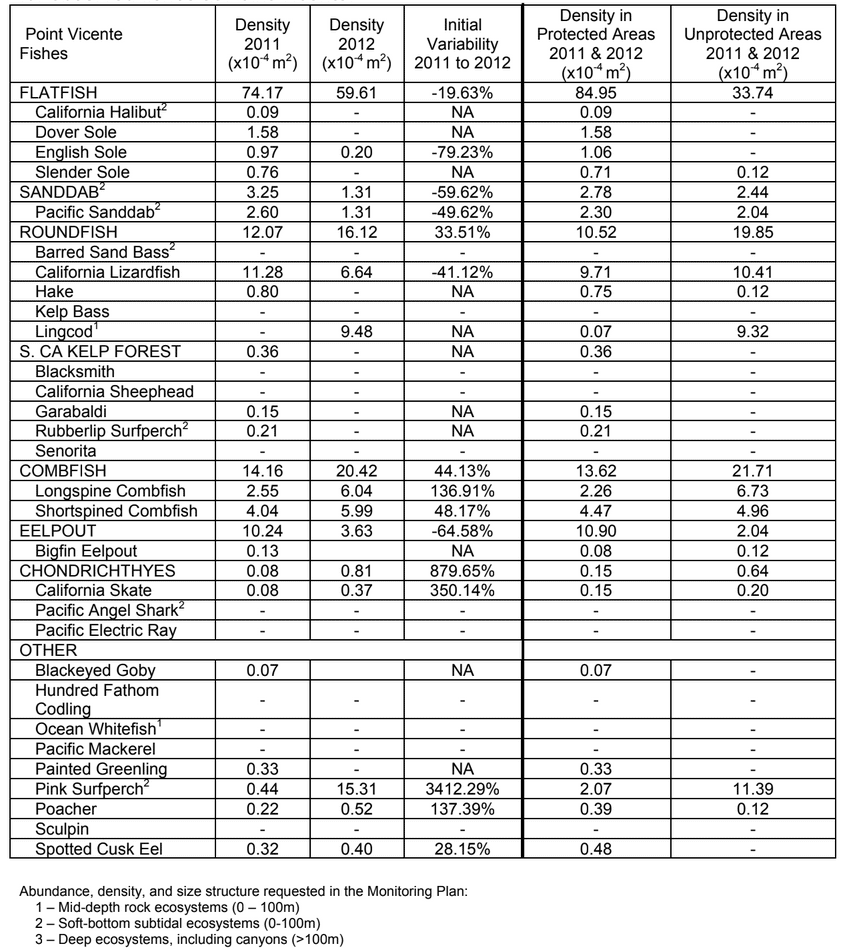
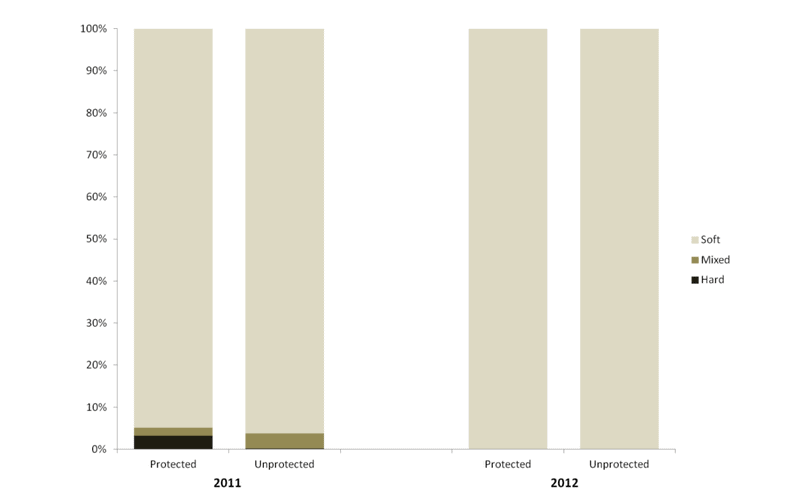


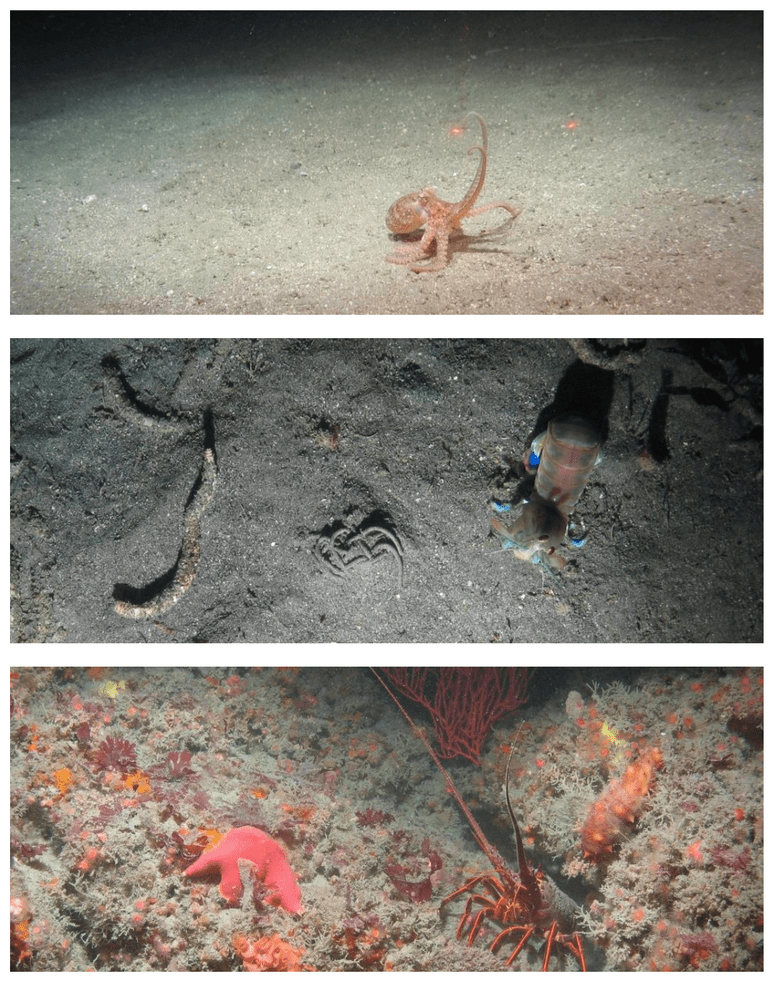
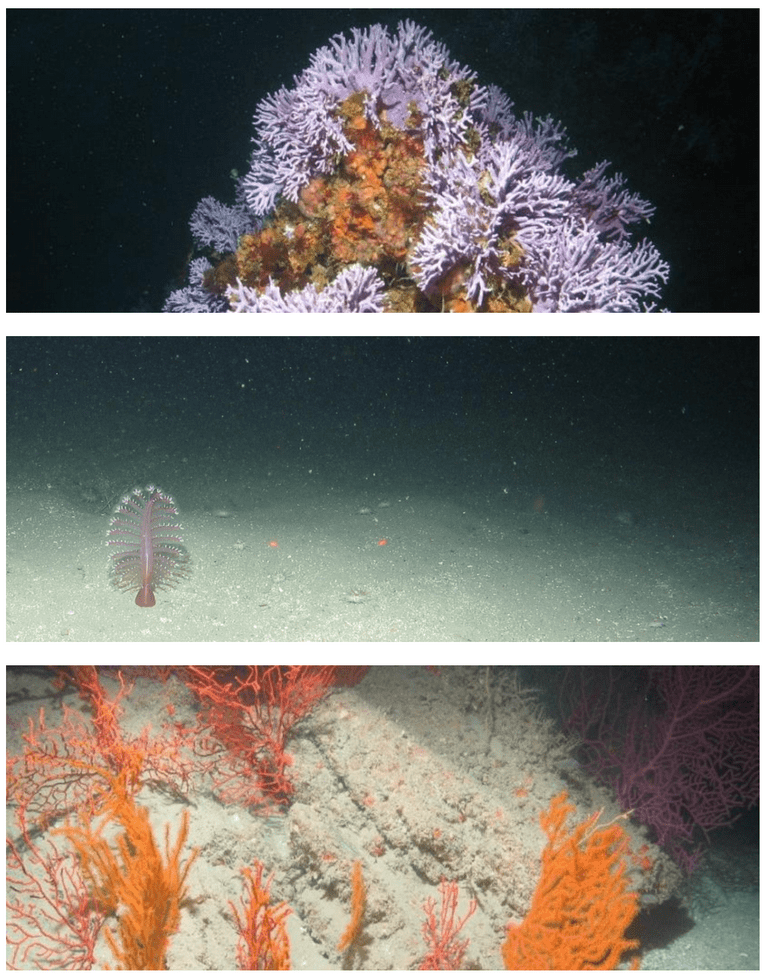


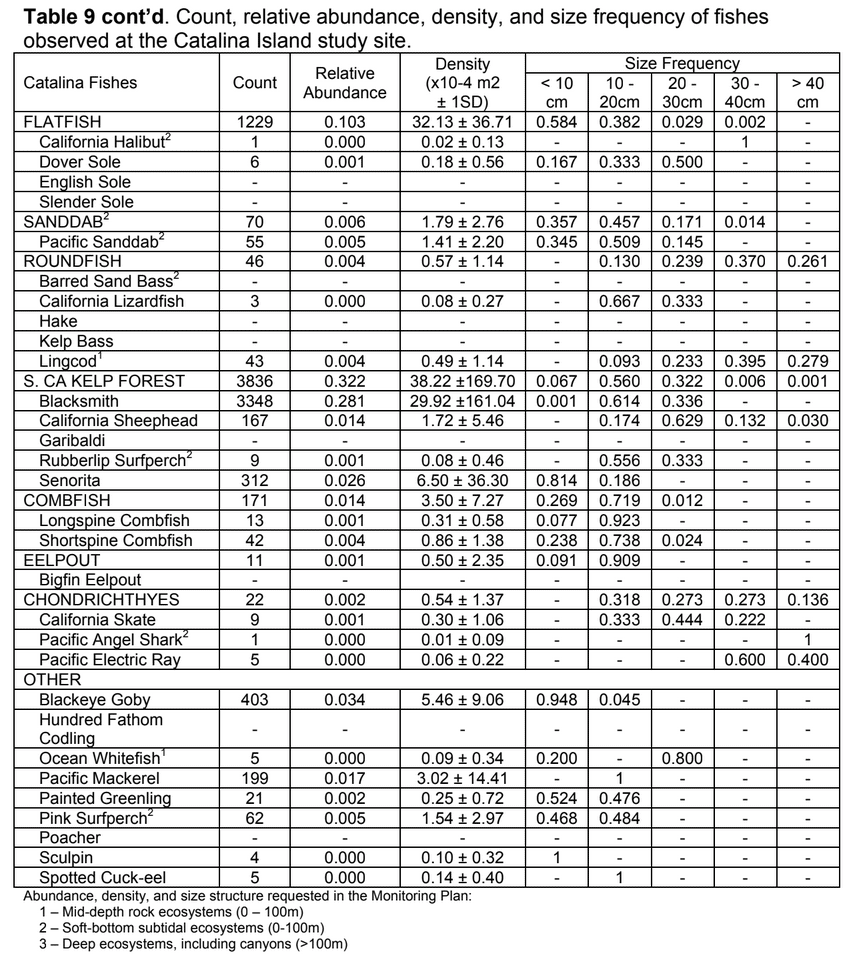


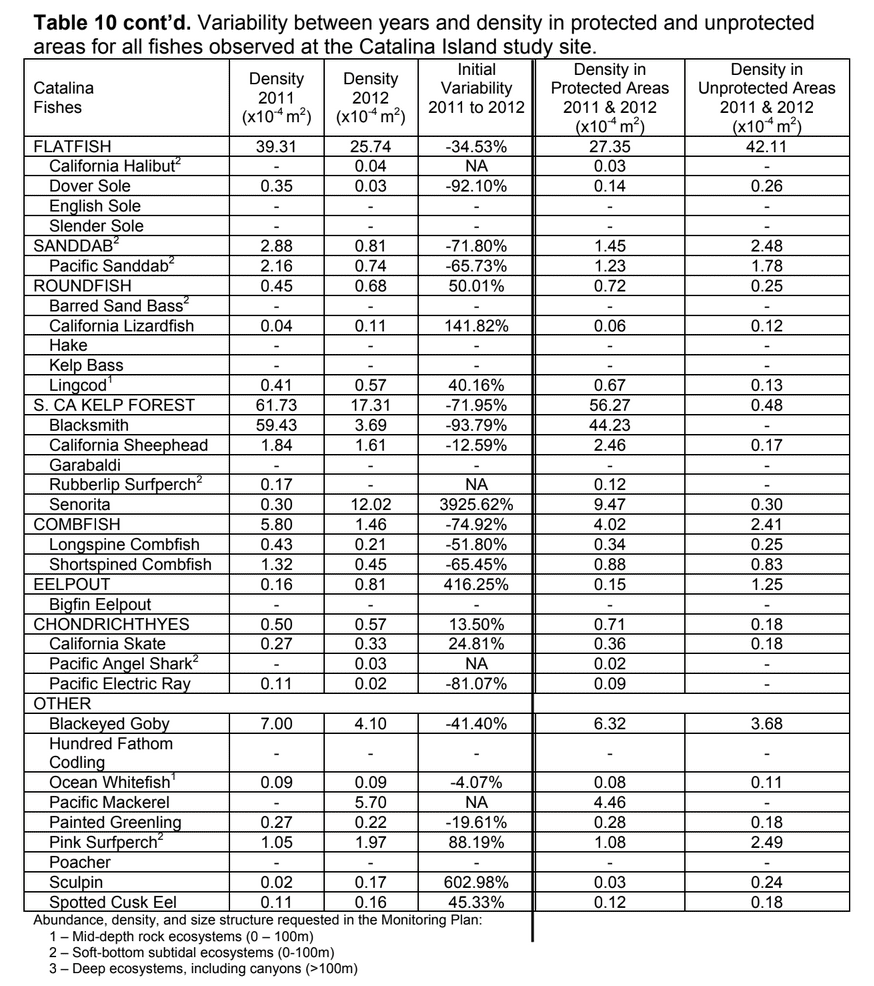

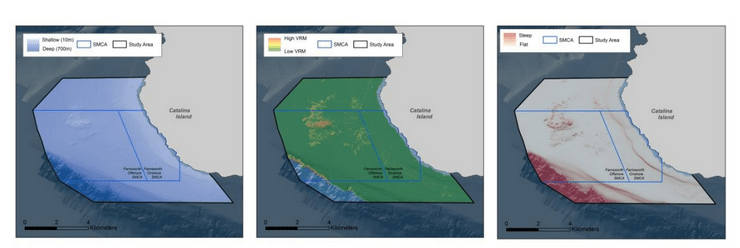
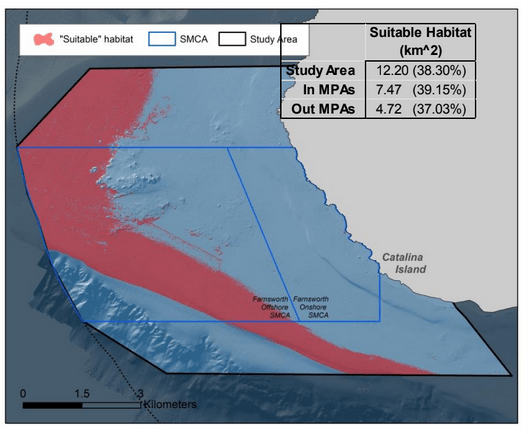
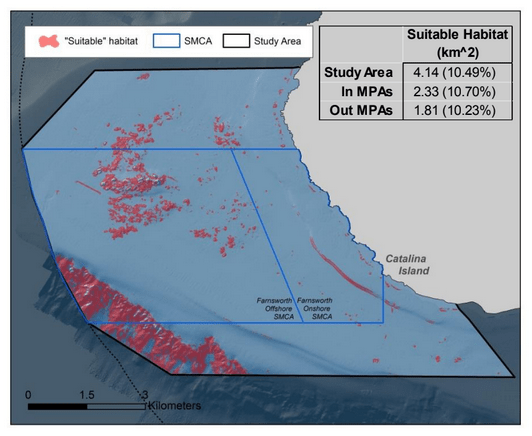
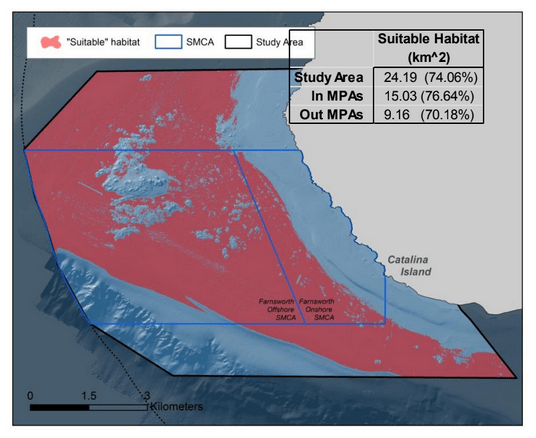
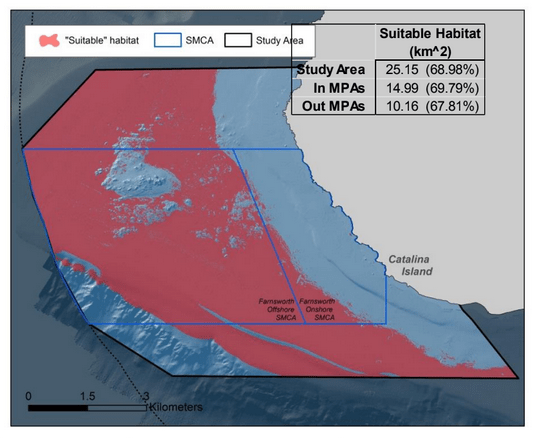
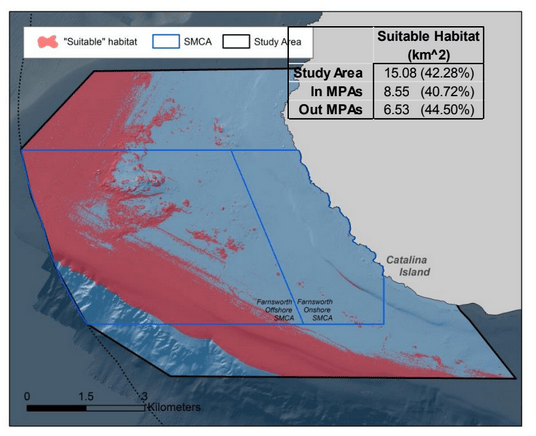

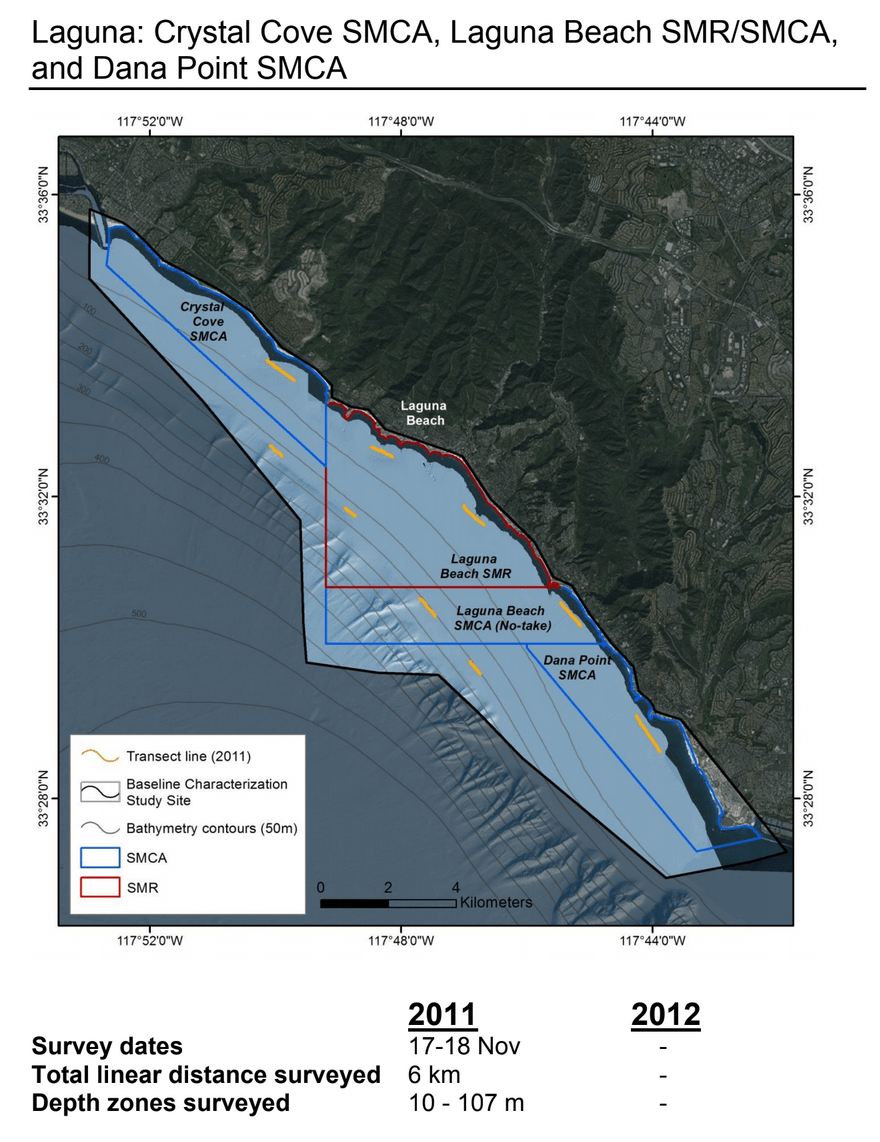

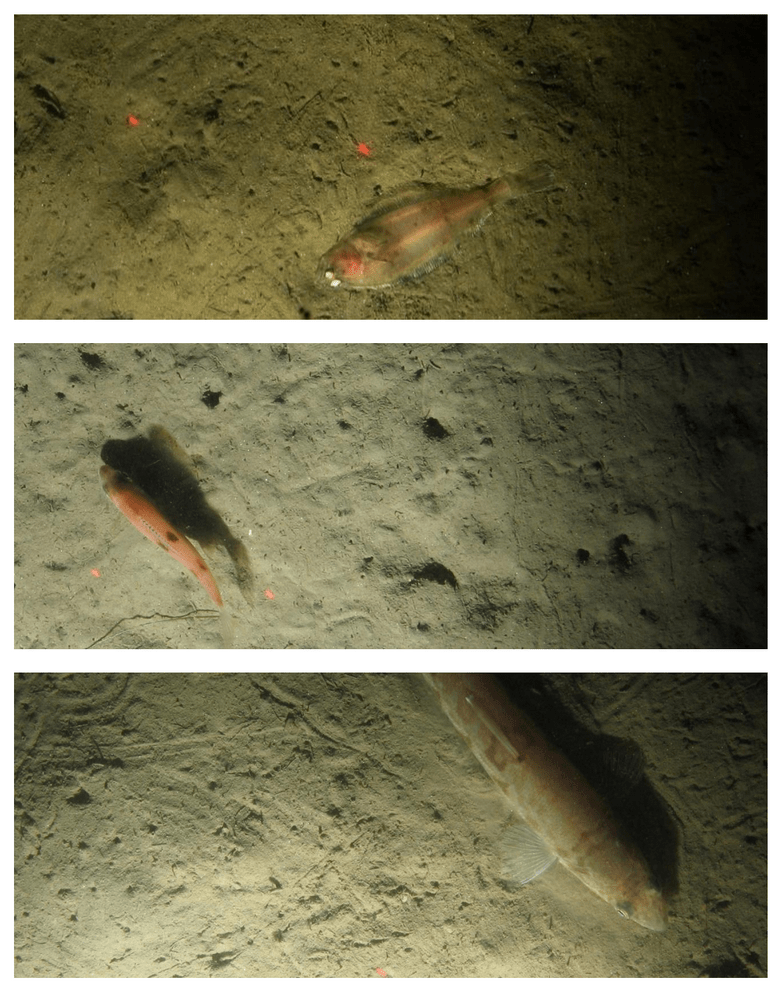
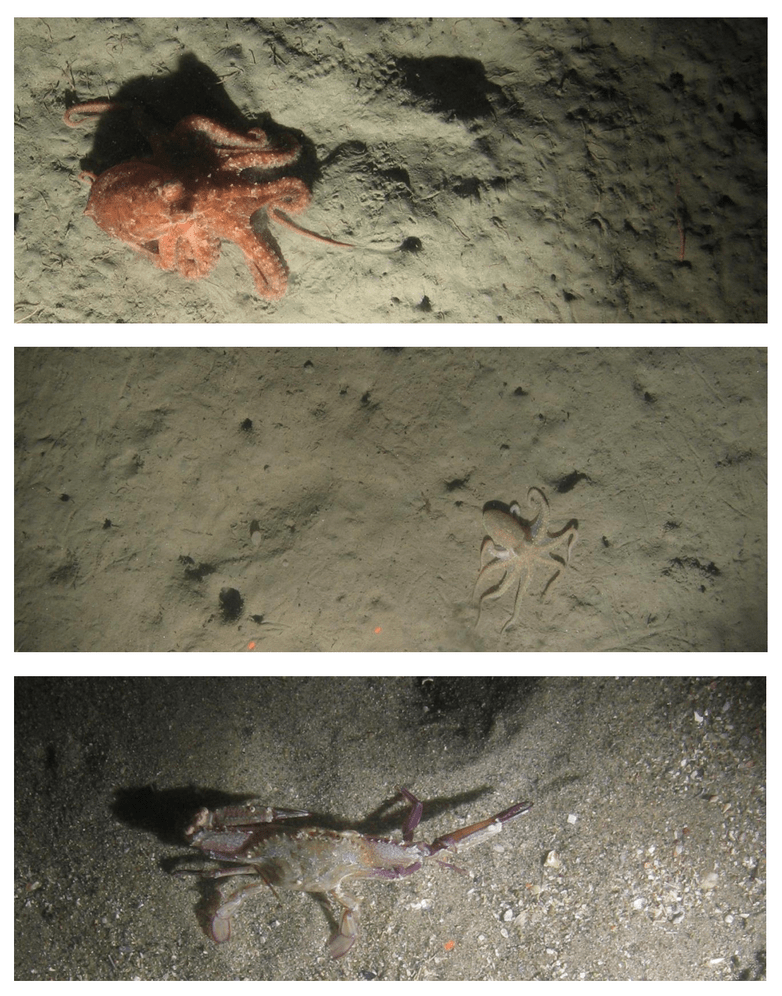
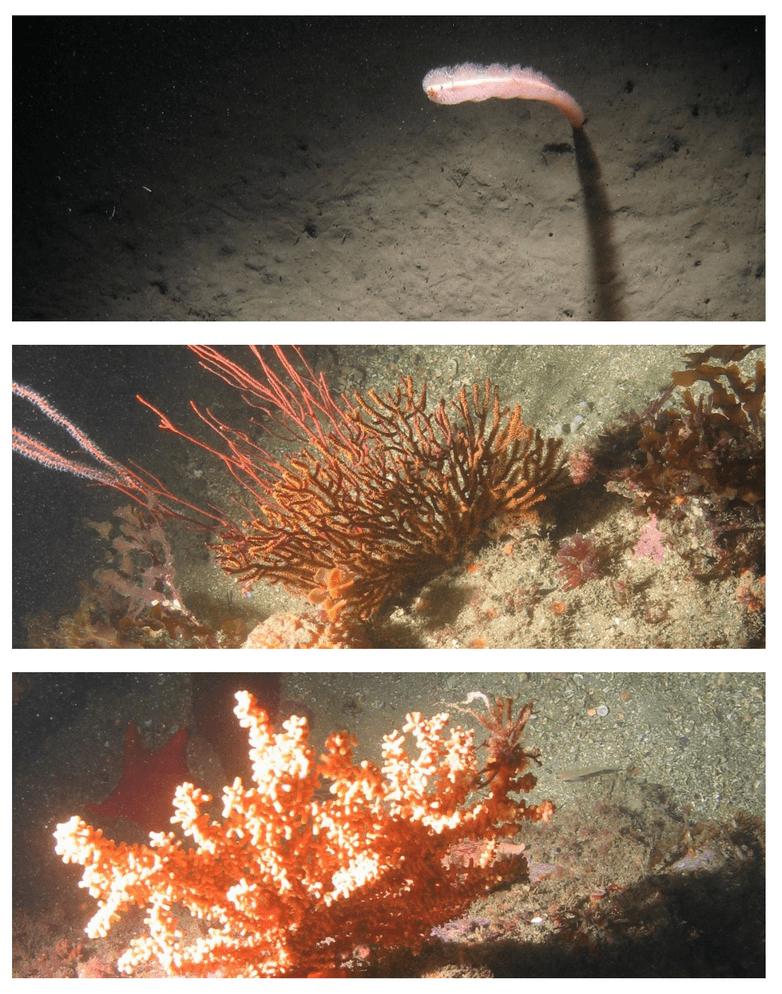
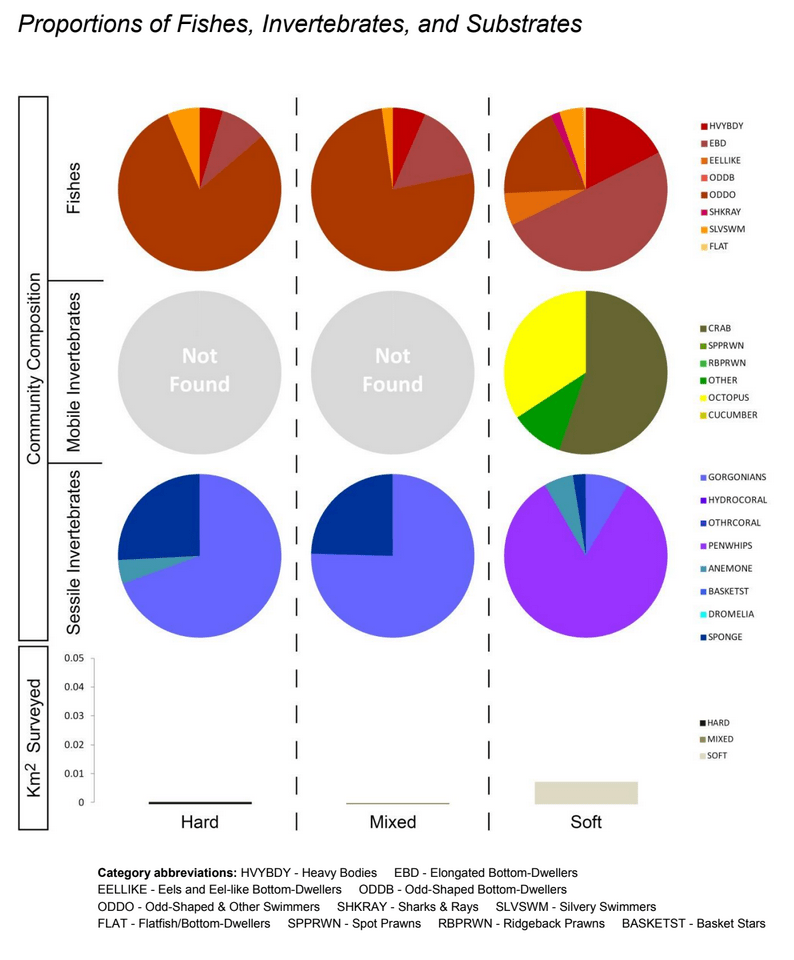

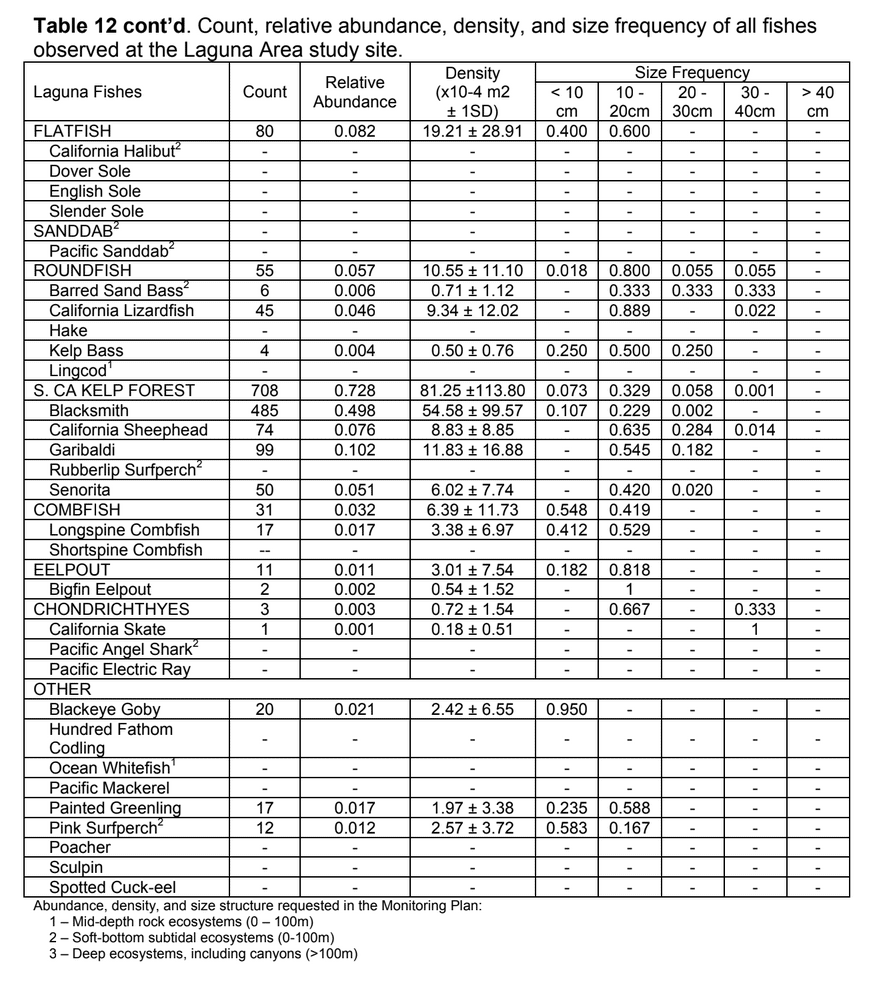
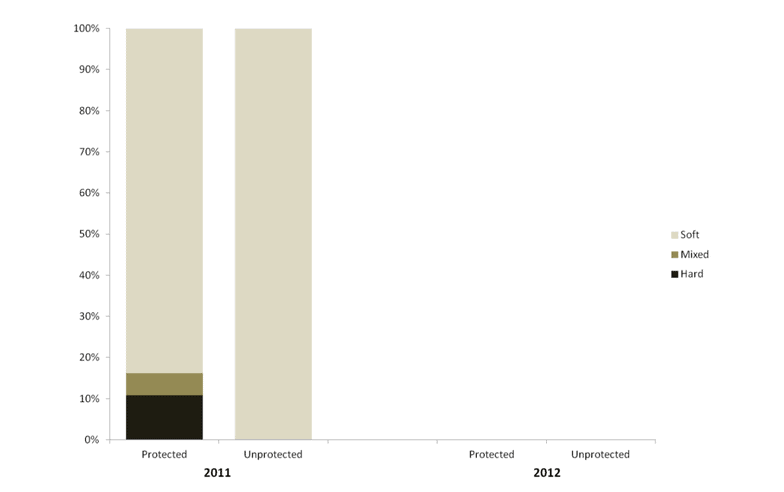

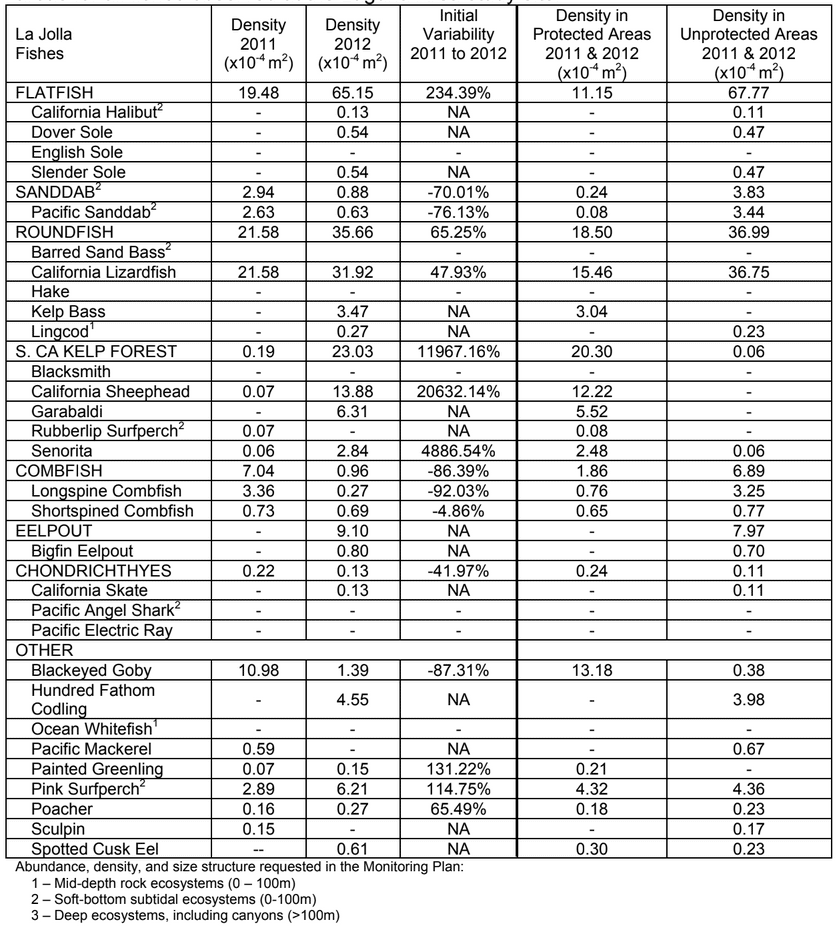


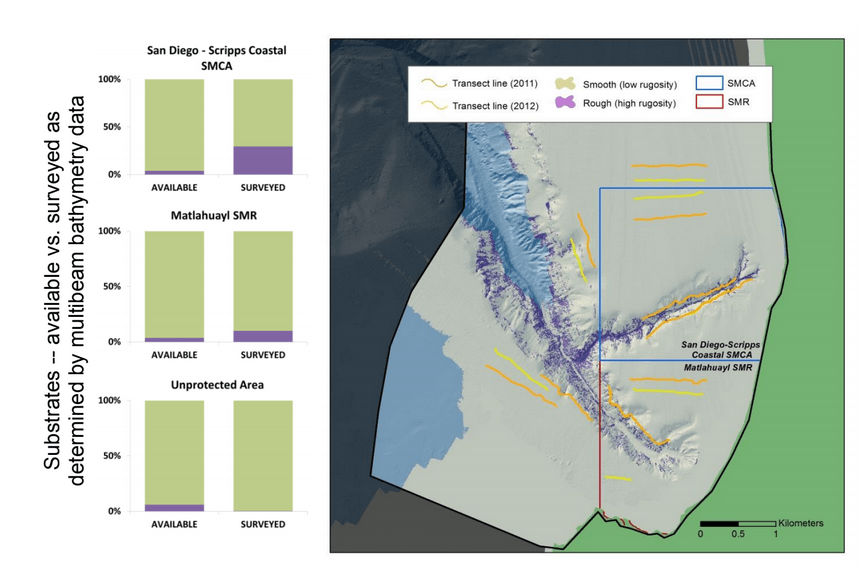
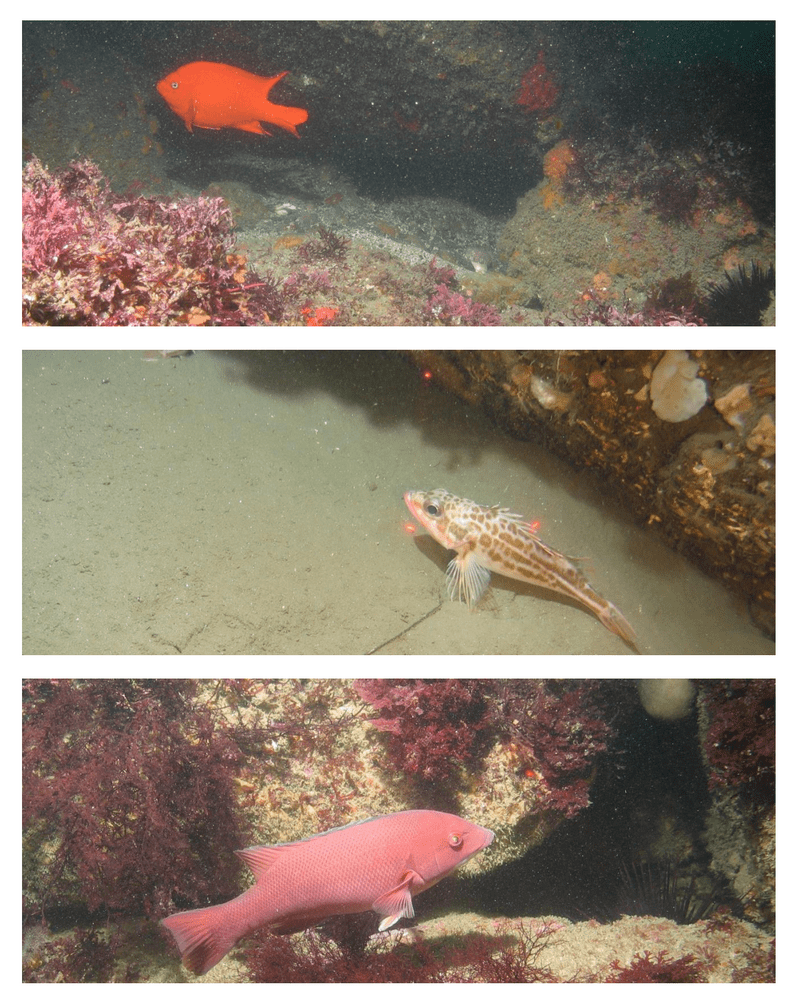
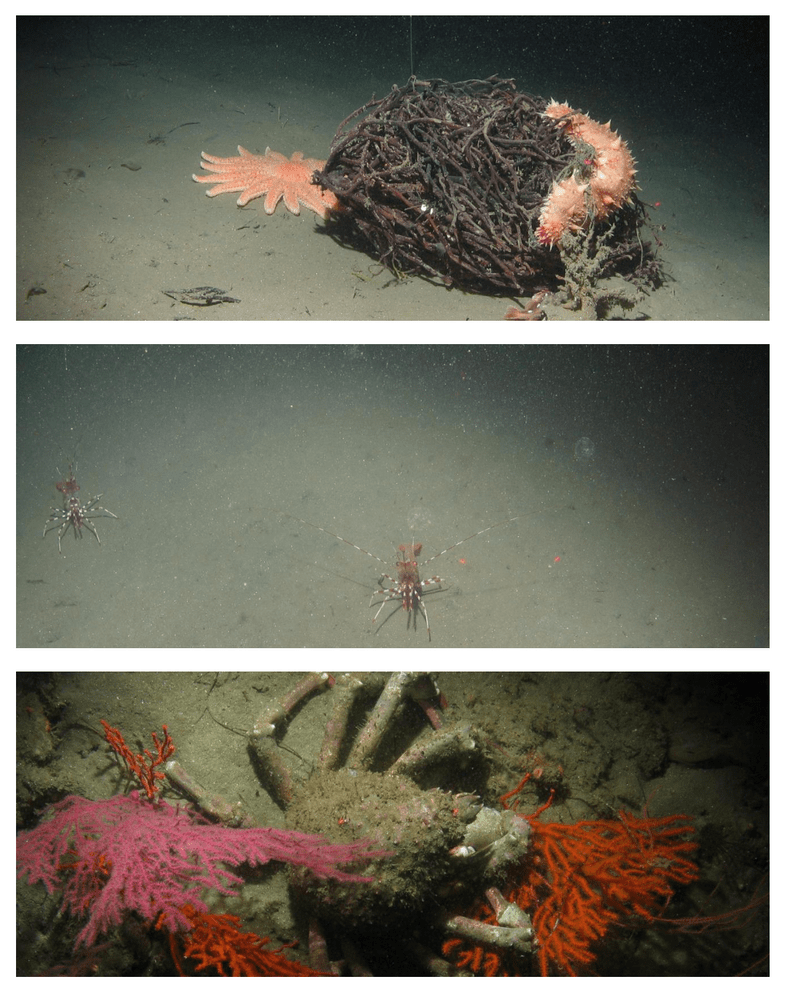

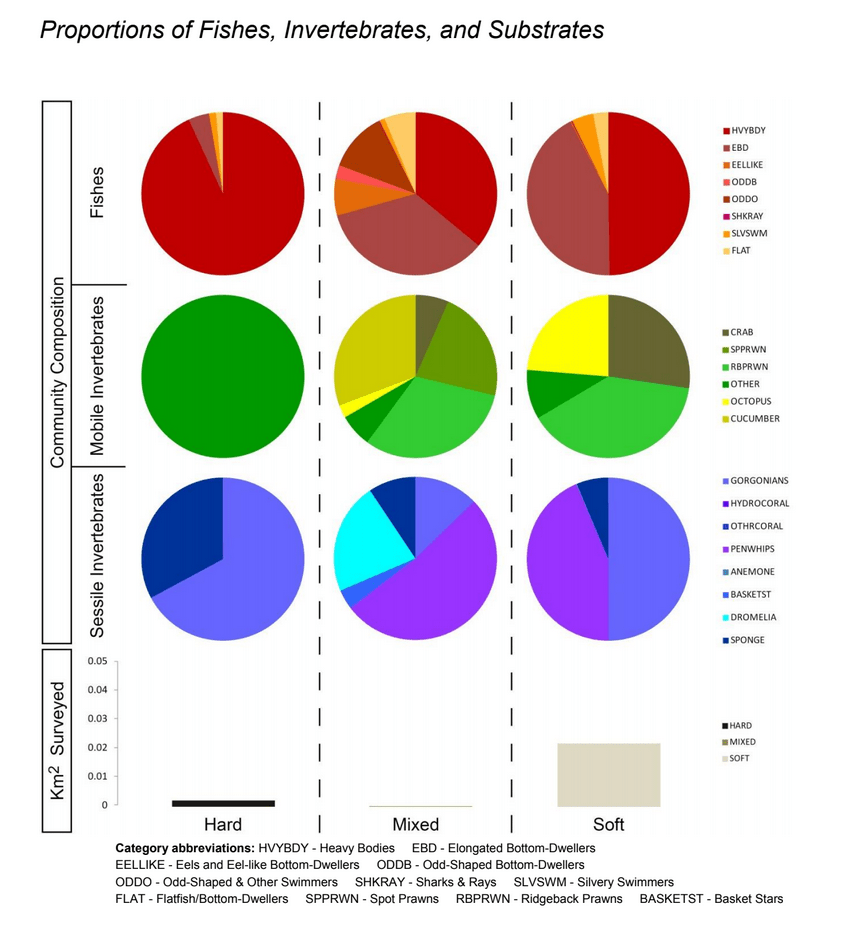

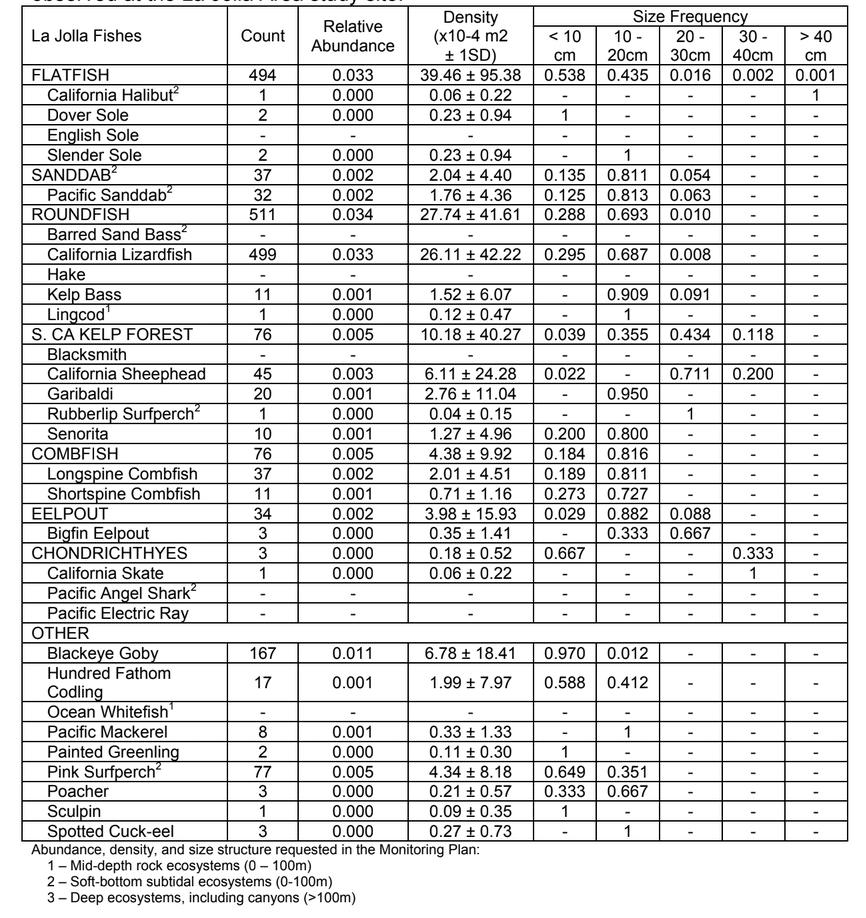
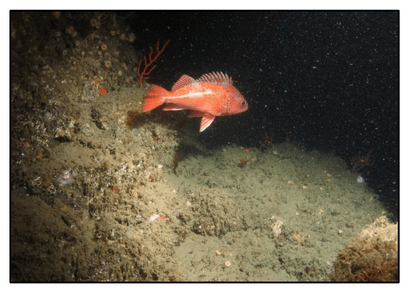 Despite this importance, little is known about the structure, distribution, and
Despite this importance, little is known about the structure, distribution, and

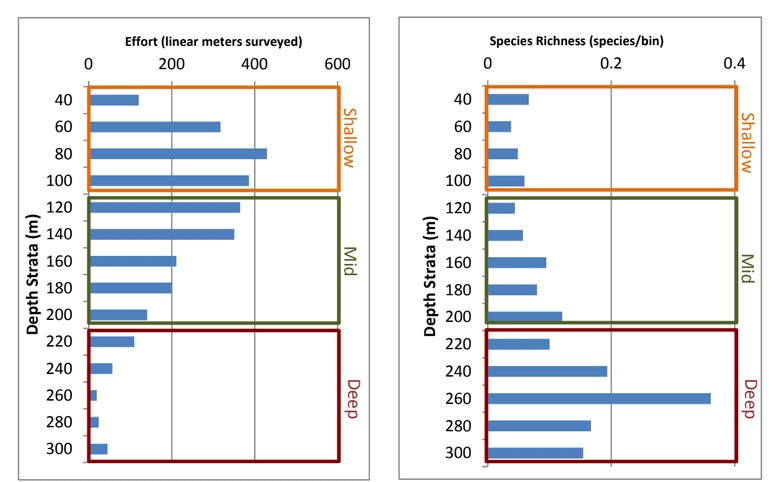
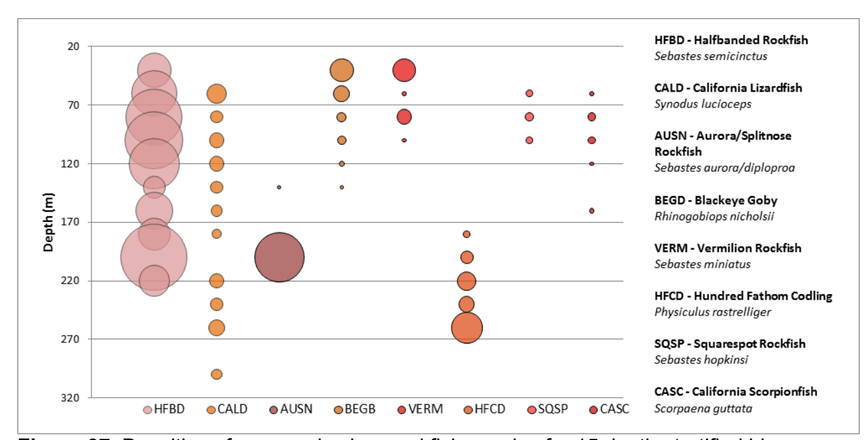
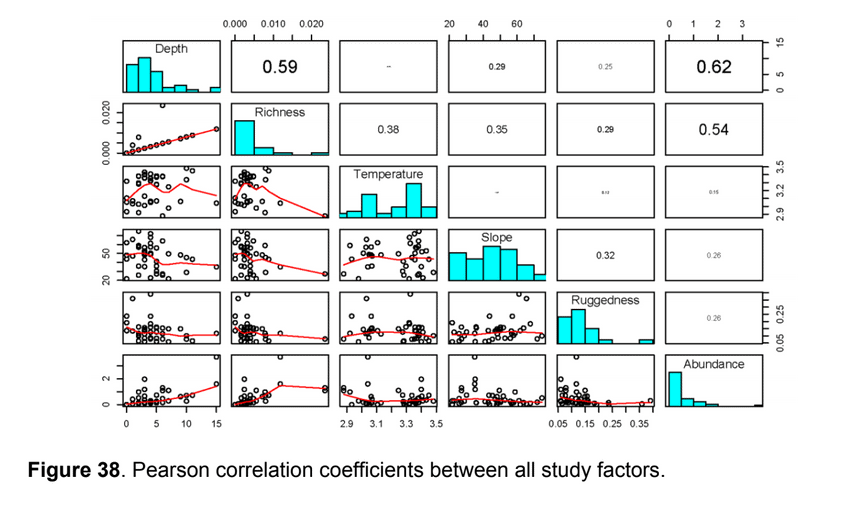
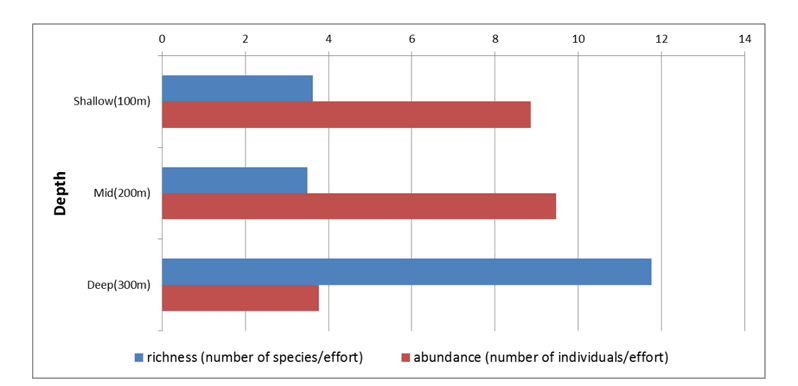

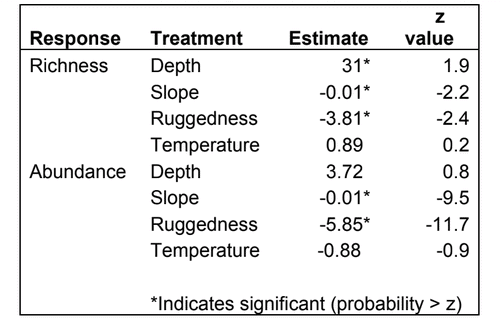
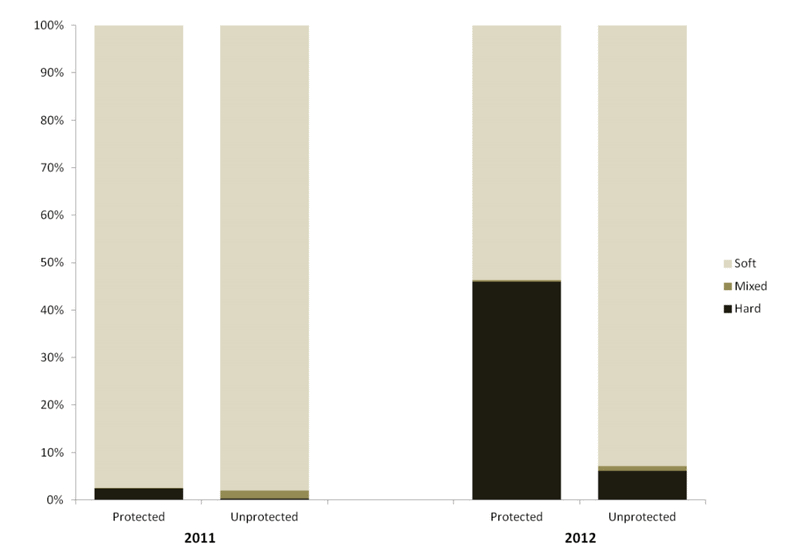
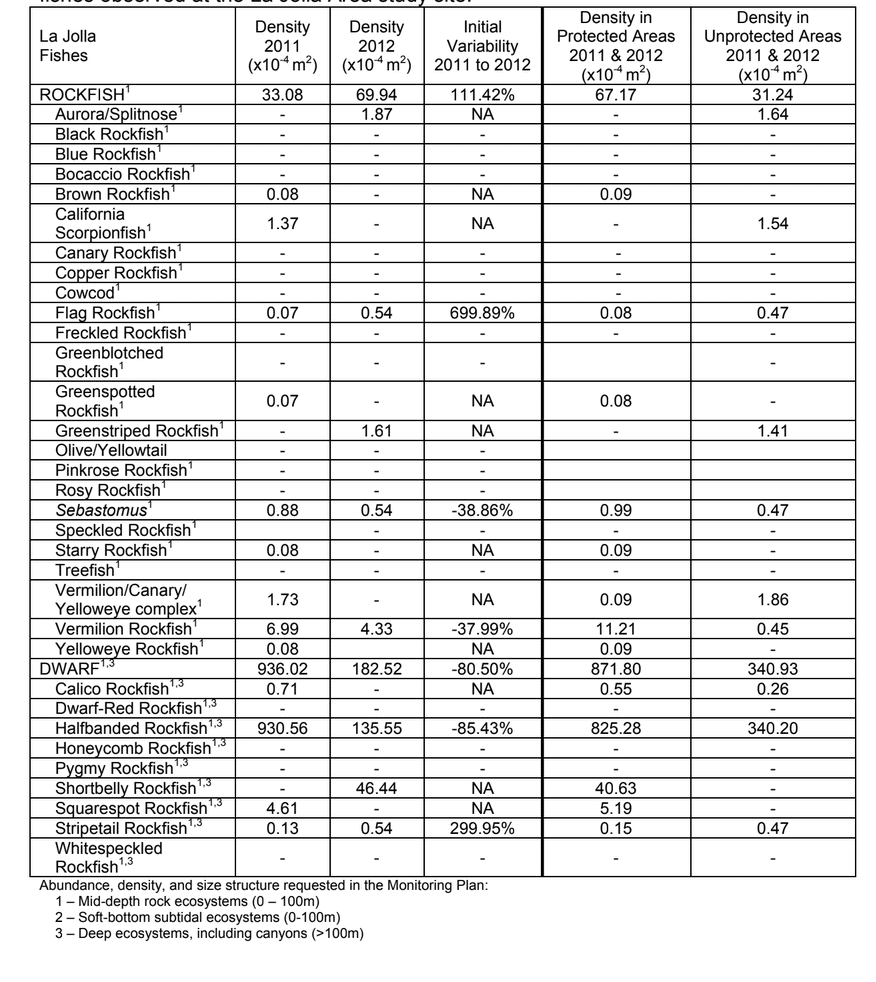
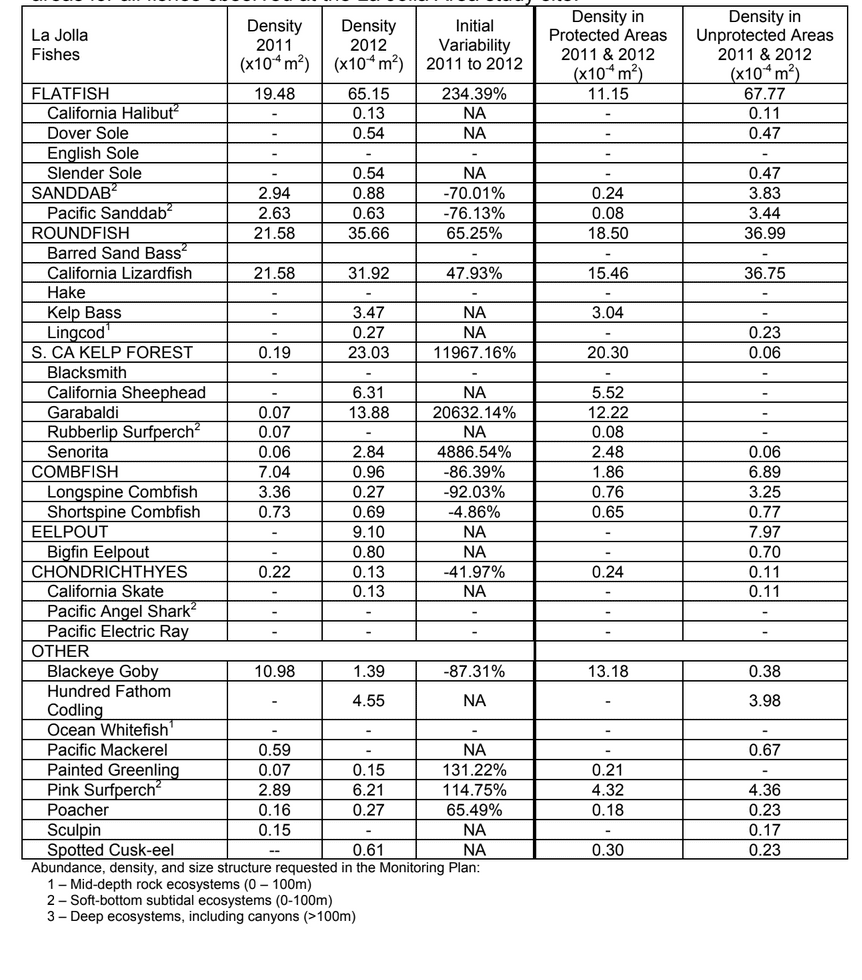
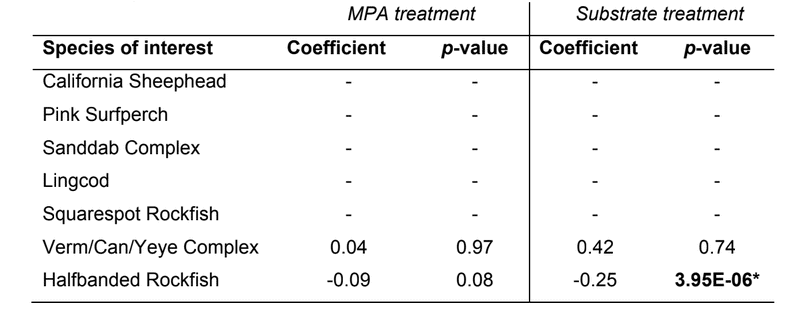
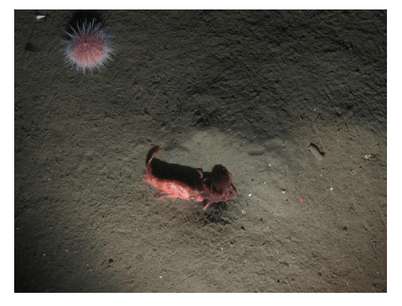 state waters. Below are brief descriptions of two such on-going projects, one that describes the distributions of fishes and invertebrates with depth along the shelf and slope elsewhere throughout the sampled areas, and one that
state waters. Below are brief descriptions of two such on-going projects, one that describes the distributions of fishes and invertebrates with depth along the shelf and slope elsewhere throughout the sampled areas, and one that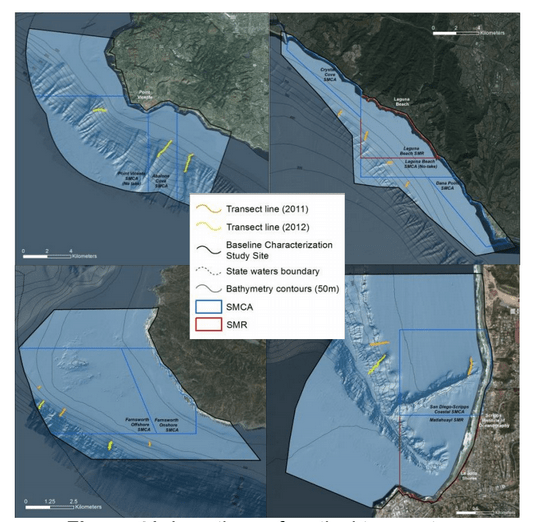
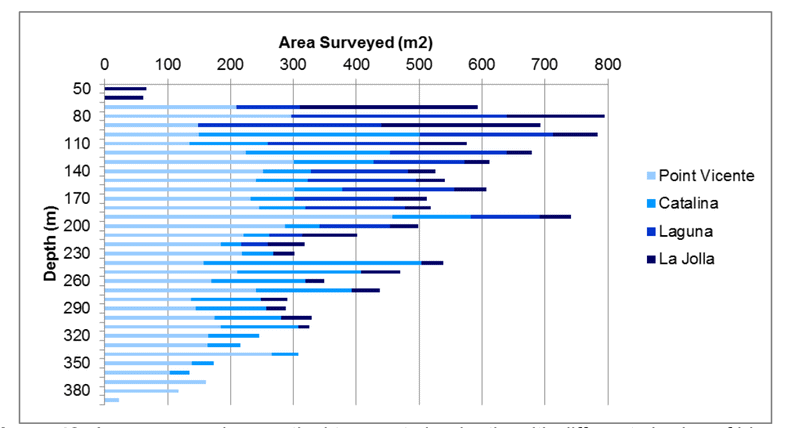
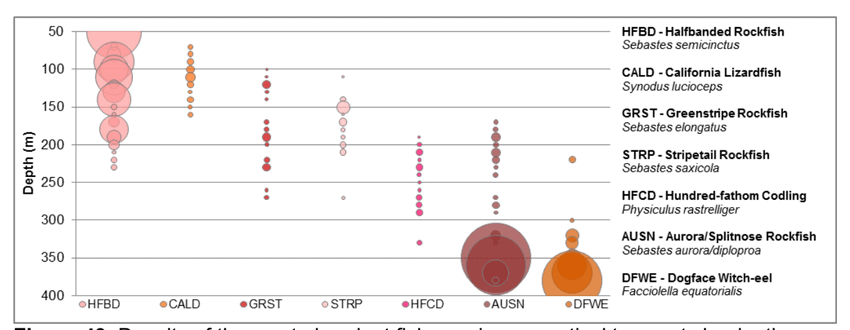
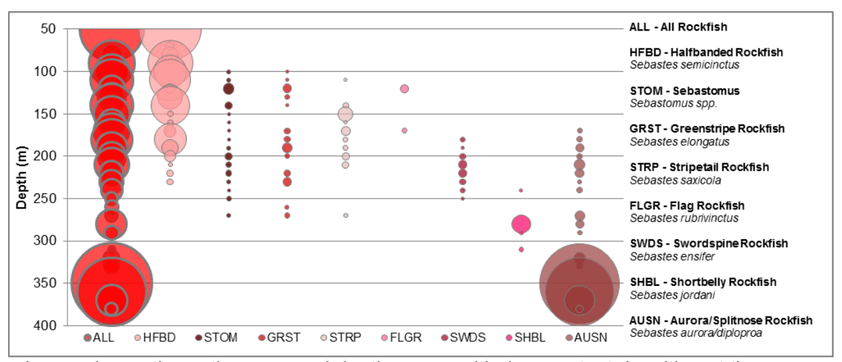
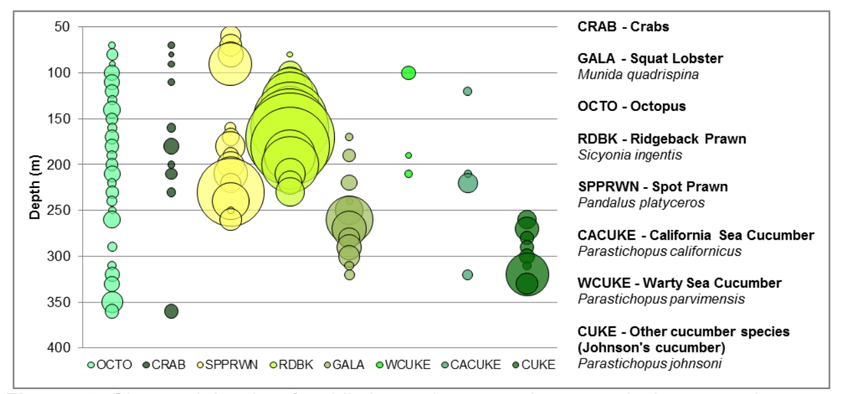
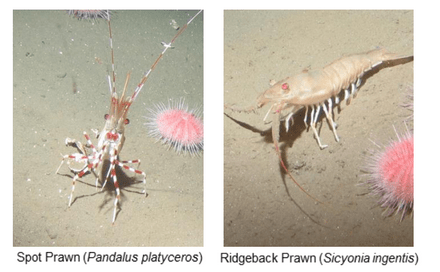



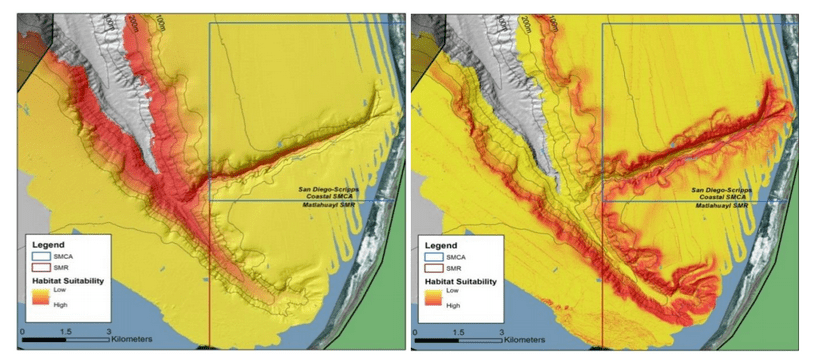
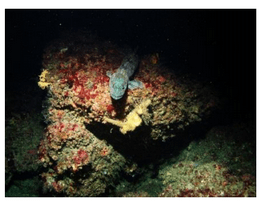 (such as the areas sampled for this report) the likelihood of a strong citizen-based monitoring program coming to the fore is probably very low; working in the deep water is costly, including vessel support, vehicle support (ROV, submersible, camera sled), and the personnel necessary to operate both. And yet, despite the associated cost, the non-invasive sampling of marine ecosystems using imagery platforms has important advantages with so many marine populations at historically-low levels.
(such as the areas sampled for this report) the likelihood of a strong citizen-based monitoring program coming to the fore is probably very low; working in the deep water is costly, including vessel support, vehicle support (ROV, submersible, camera sled), and the personnel necessary to operate both. And yet, despite the associated cost, the non-invasive sampling of marine ecosystems using imagery platforms has important advantages with so many marine populations at historically-low levels.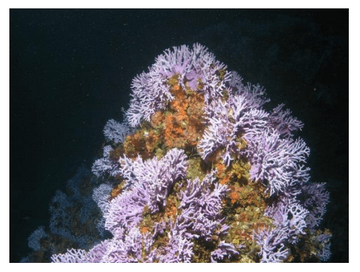 Below we provide a first pass at a group of species and species complexes, including fishes as well as mobile and sessile invertebrates, that are capable of being monitored in this way and were observed during the baseline characterization effort in the South Coast. While we expect that many scientists could reach agreement on some of the organisms on this list, it is also likely that much discussion could be engendered to flesh this group out further. What we provide here is intended as a point of departure for discussion as each of the MLPA regions moves beyond baseline characterization.
Below we provide a first pass at a group of species and species complexes, including fishes as well as mobile and sessile invertebrates, that are capable of being monitored in this way and were observed during the baseline characterization effort in the South Coast. While we expect that many scientists could reach agreement on some of the organisms on this list, it is also likely that much discussion could be engendered to flesh this group out further. What we provide here is intended as a point of departure for discussion as each of the MLPA regions moves beyond baseline characterization.